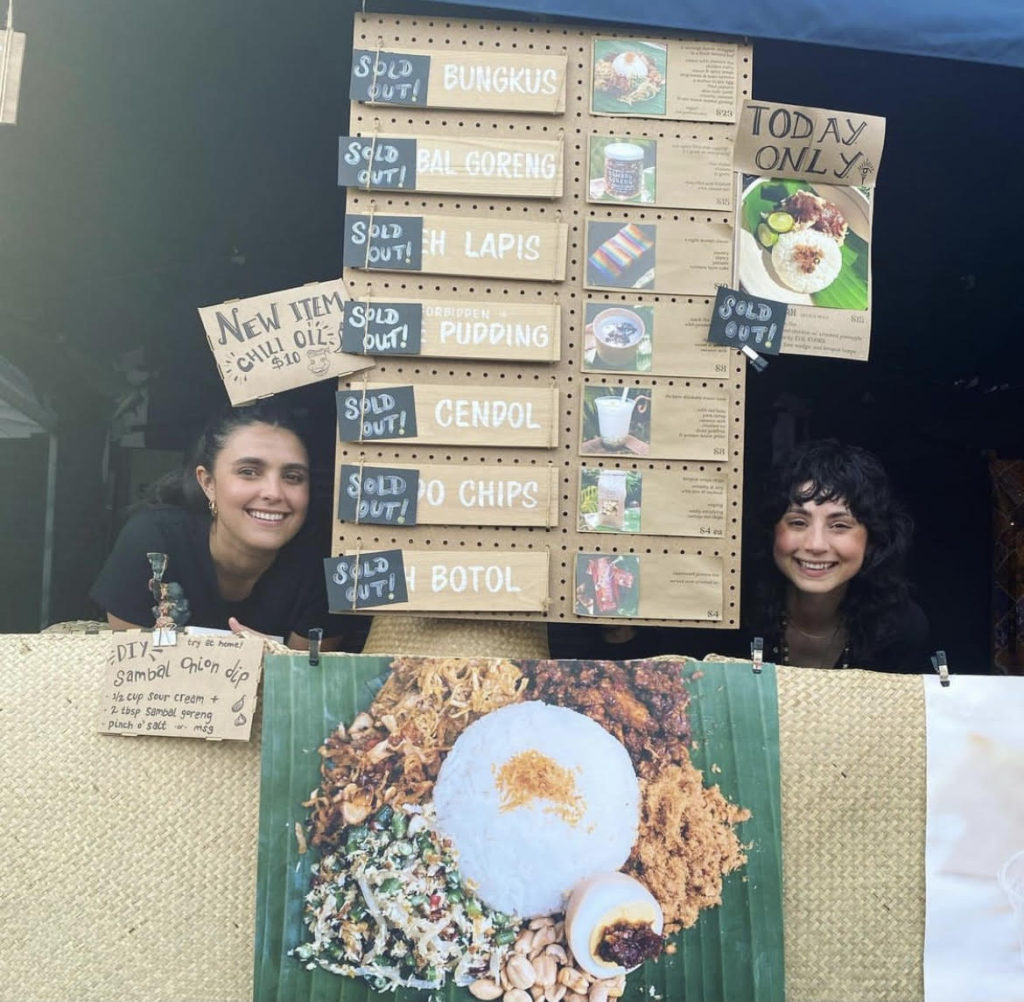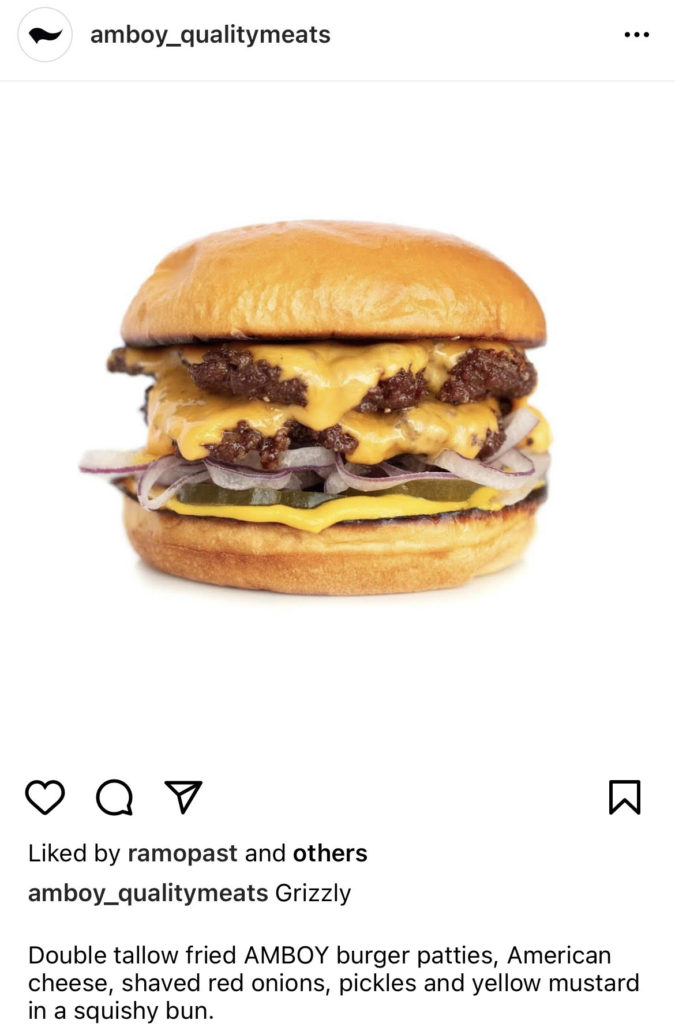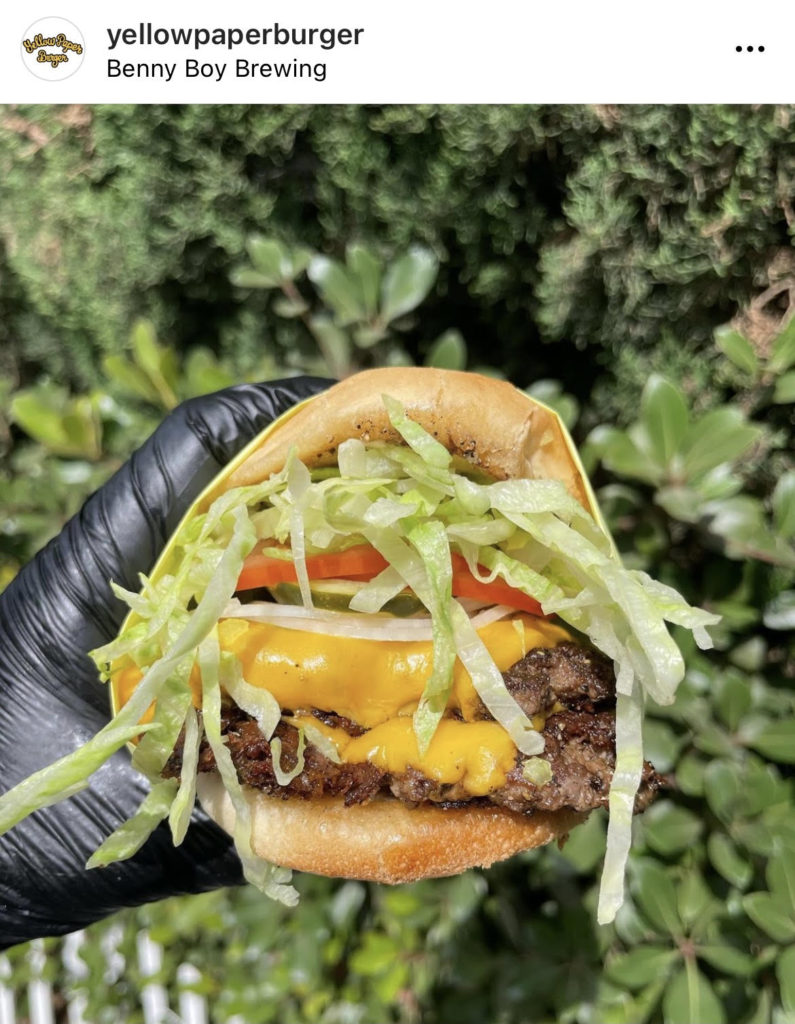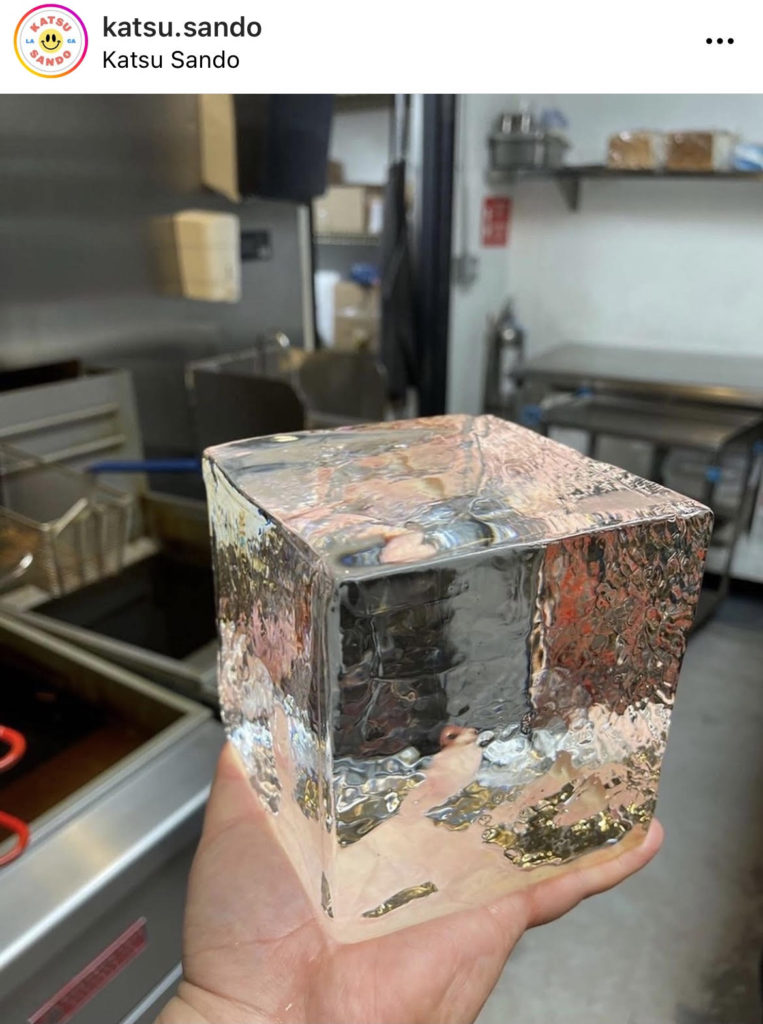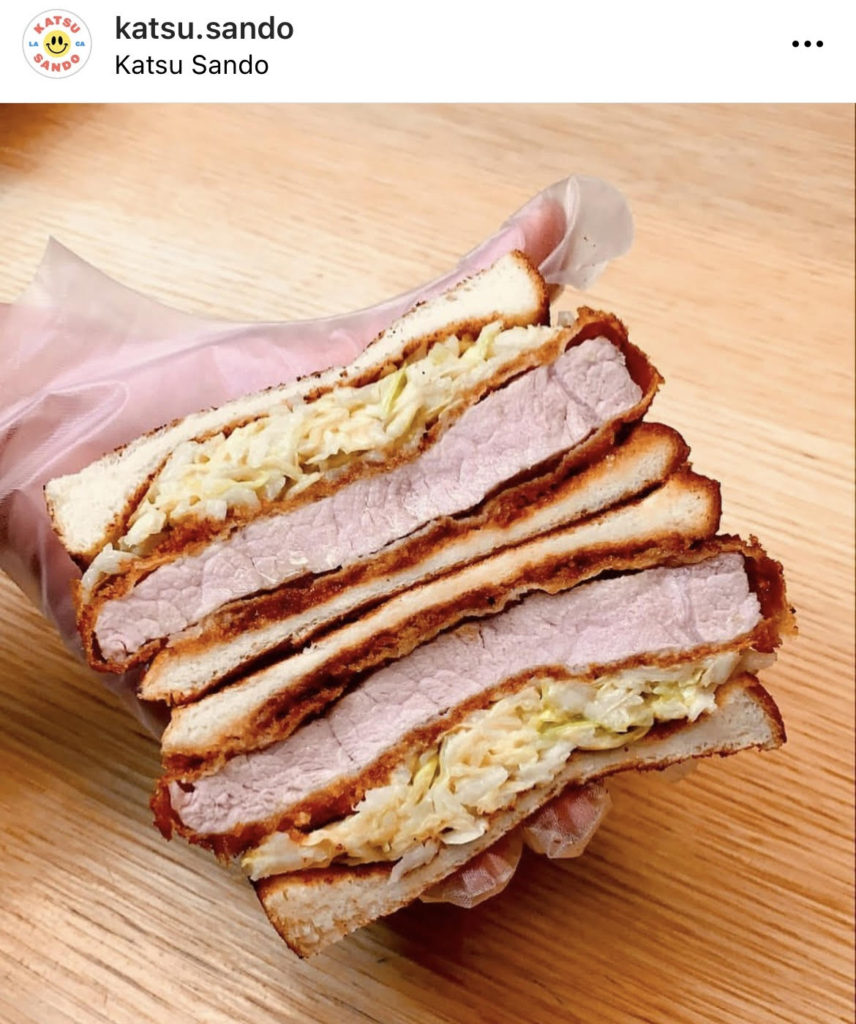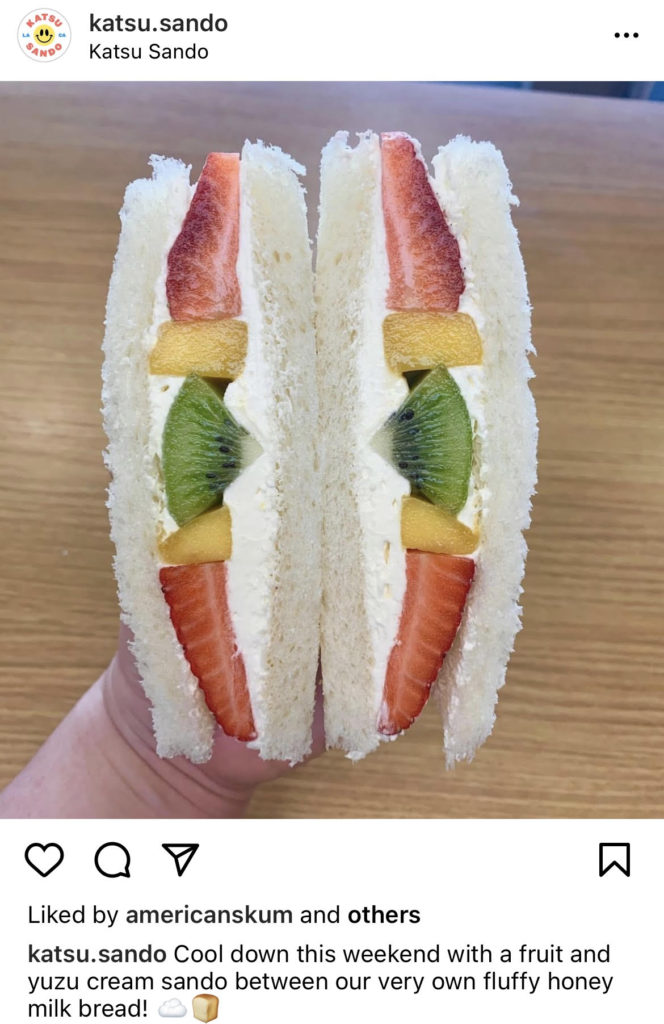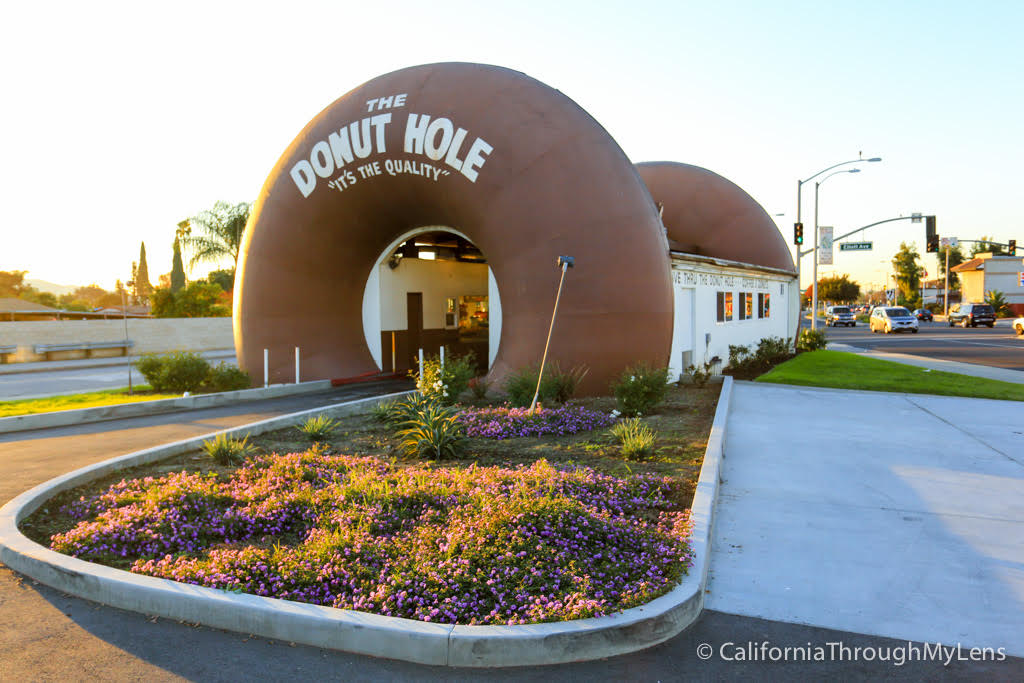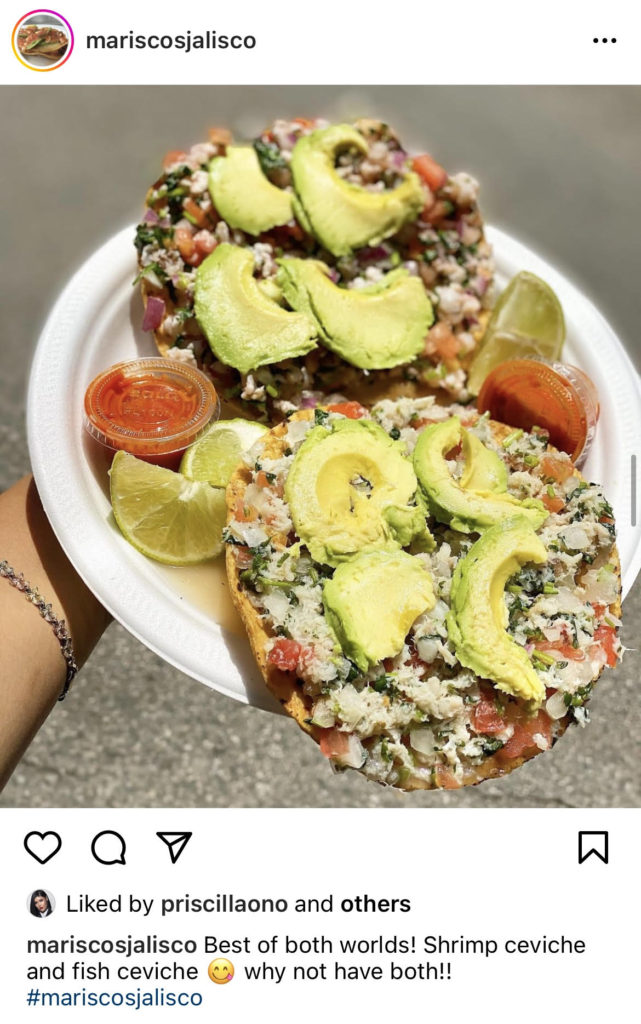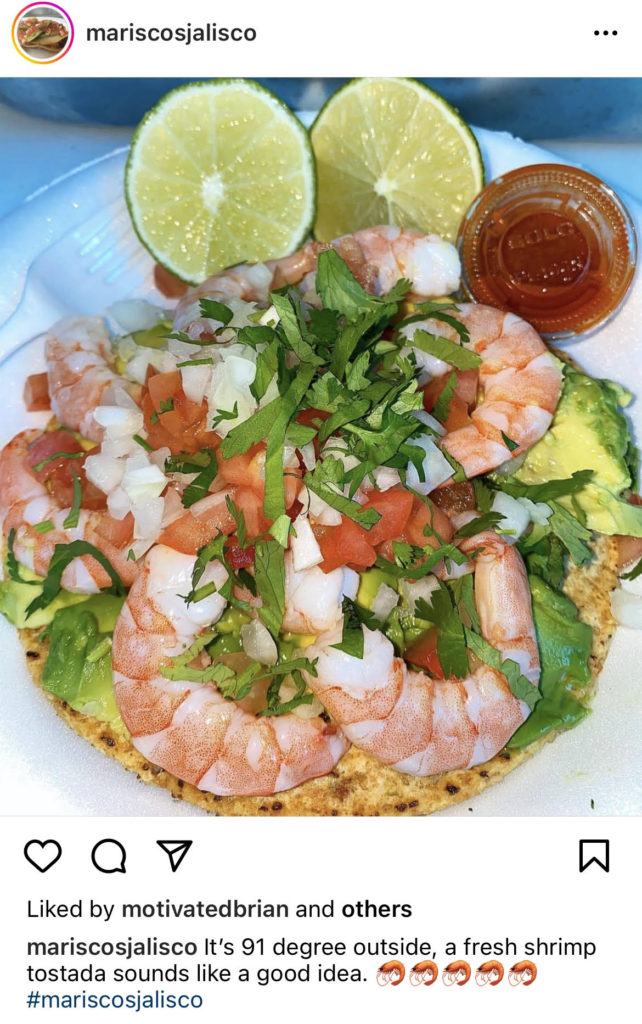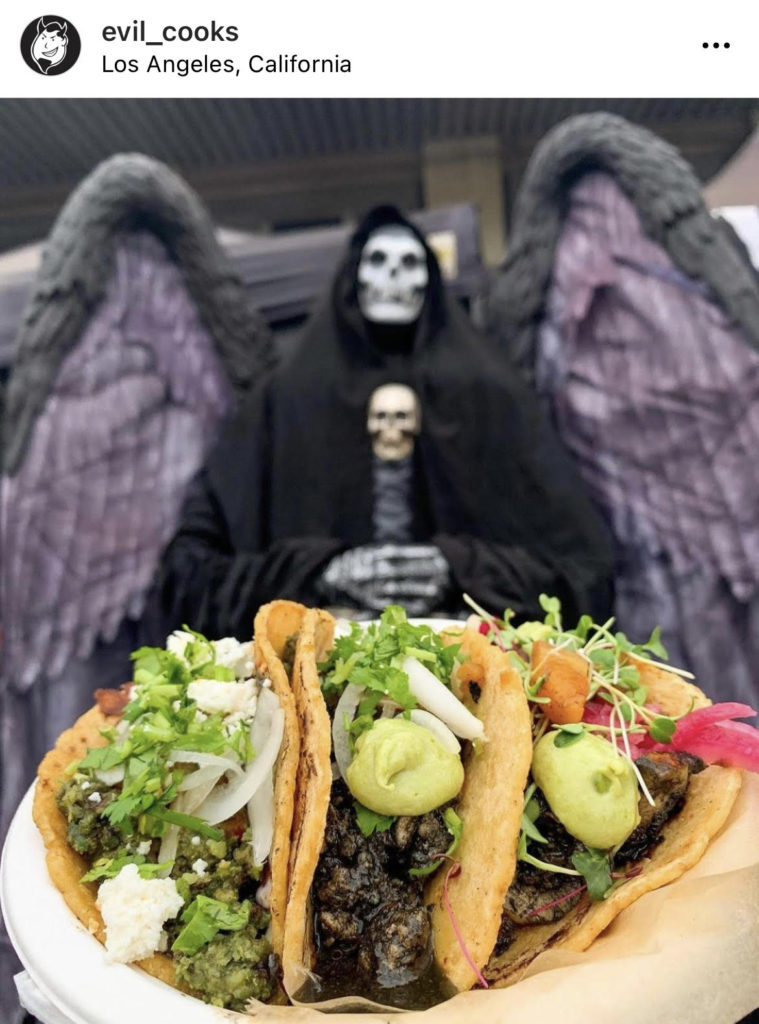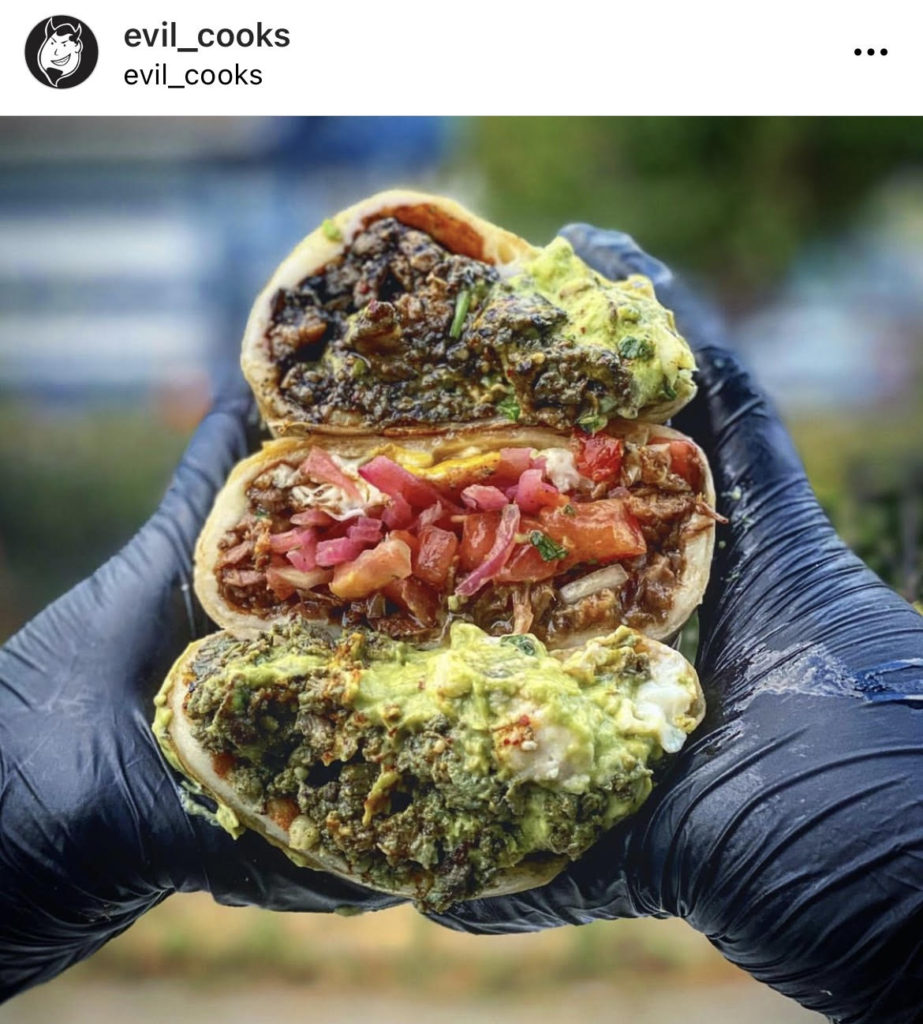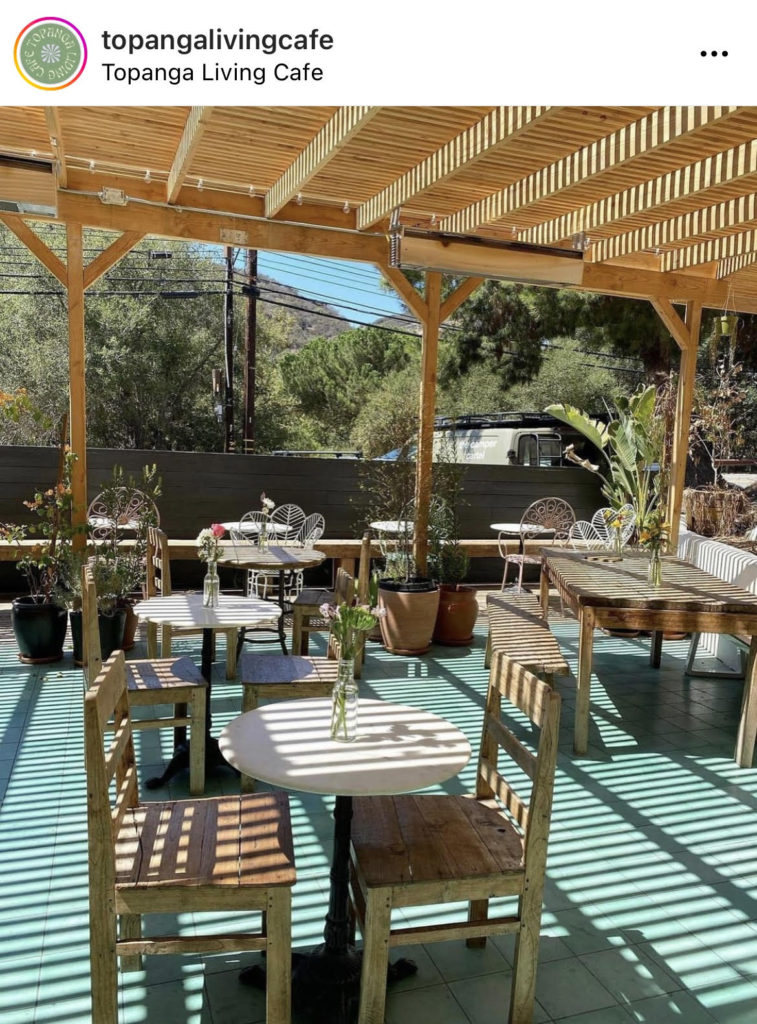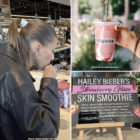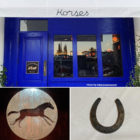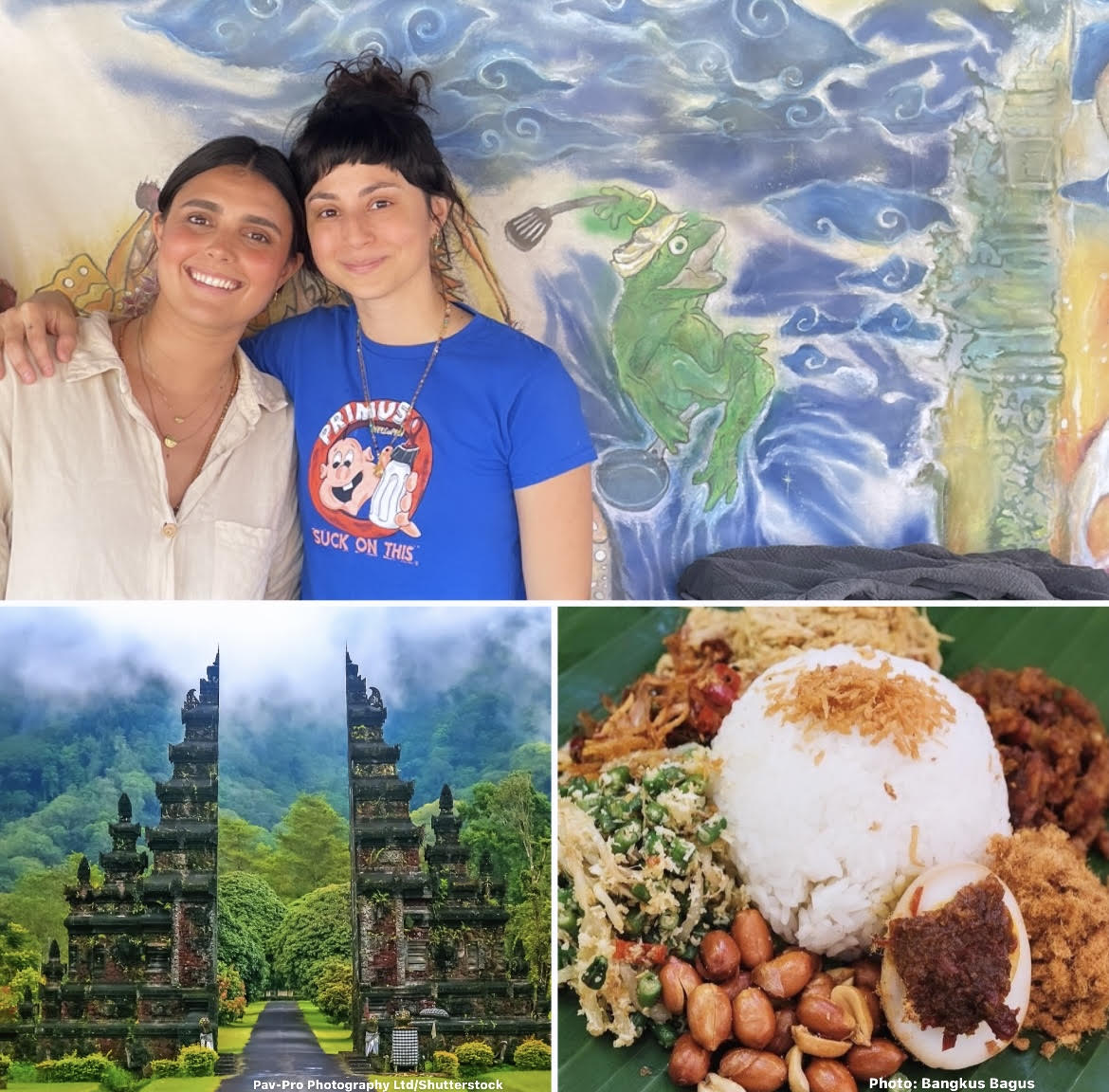
Welcome to LA Stories, a section where I interview people from all walks of life that have made LA their home.
The first time I came across Bungkus Bagus was in 2021 on Instagram. All I knew was that it was a very popular Balinese street food pop-up, and that it was founded in the thick of the pandemic by sisters Tara and Celene Carrara. Then, on a Sunday in July 2022, I randomly went to the Smorgasburg food market, which is held every Sunday from 10 AM to 4 PM in Row DTLA. Mind you, I hadn’t been there since 2017, which was when I wrote my first blog post! I parked my car and arrived at the open lot with different food vendors. I didn’t know what I wanted to eat, but as I kept walking past the booths, something inside me told me to keep walking. There, on the other side of the lot, was Bungkus Bagus. I ordered the Bungkus, which is their signature dish, and a lemonade.
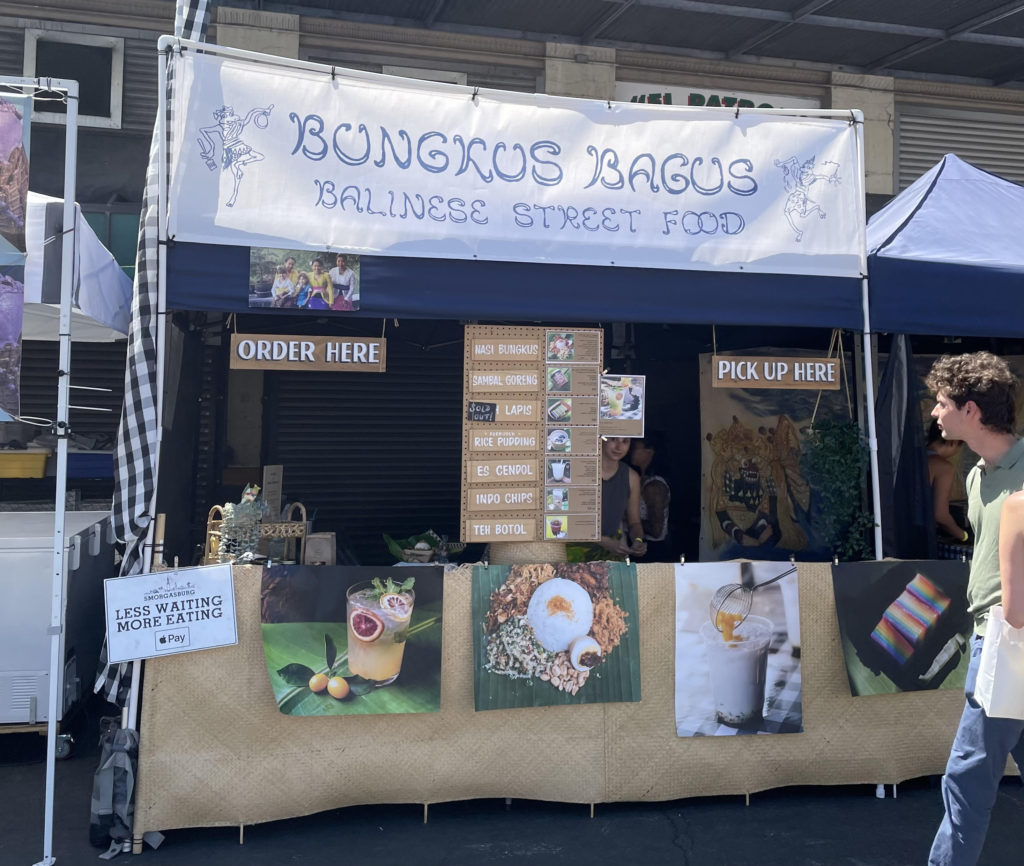
Note: (October 2022) Bungkus Bagus is no longer at the Smorgasburg Food Market! When a vendor pulls out, it’s usually because they have future plans, as in, opening a brick-and-mortar! In the meantime, follow Tara and Celene on Instagram and subscribe to the newsletter on their website to stay updated on their latest projects.
Since this was my first time, I hadn’t formally met Tara and Celene, nor had I had Balinese food before, so I had no idea what to expect. As I unfolded the leaf, I was surprised by the beautiful presentation, but the best was yet to come. As soon as I took the first bite, my taste buds exploded. The different textures and flavors took me on a sensory trip that I rarely had experienced before. In the interview, Tara and Celene do an amazing job explaining what it feels like to eat this dish — a dish that honestly, I could eat everyday. If you don’t tolerate spicy, make sure to tell them and they’ll modify it. Bungkus Bagus’ menu is dairy-free, but they can accommodate most dietary restrictions if you’re vegan or have allergies, but not soy allergies.
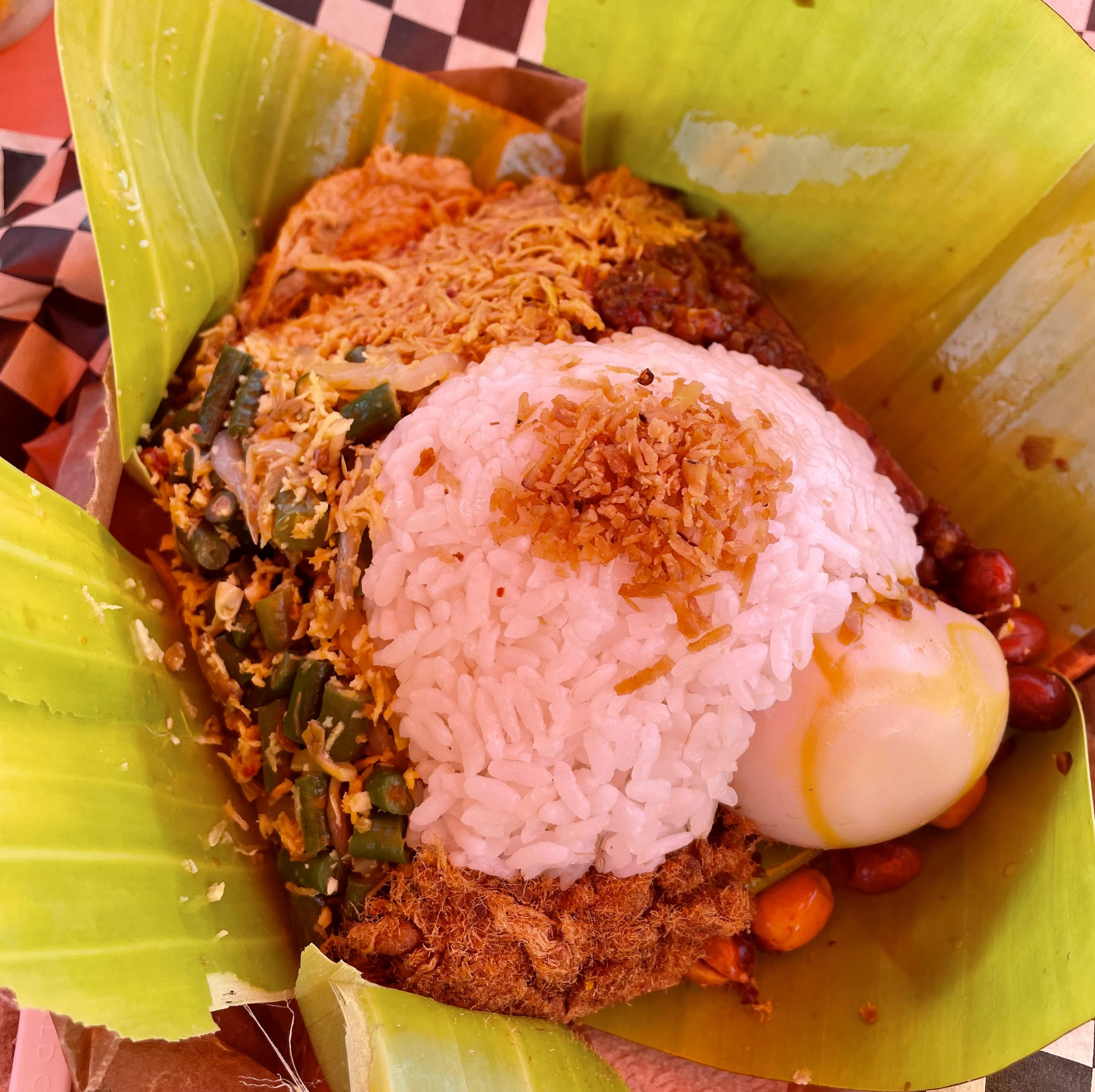
I didn’t go back to meet them that day because it was very hot and I was starting to get dizzy. However, as soon as I got home, I emailed them and we set up an interview the following week at Smorgasburg.
Fast-forward to next Sunday, inside the booth, sitting on foot stools amid the hustle and bustle of the food market, these two sisters took me on a trip to Bali through their story. From their favorite places in Bali to the way they described the traditional Balinese compound they grew up in, I felt like I was transported there.
After the interview, they gave me a complimentary bungkus and kueh lapis. While they set up a makeshift table with a towel, Celene said: “It’s very typical to eat food like this in Bali.”
If you go to Smorgasburg, besides ordering their signature dish, the Bungkus, you have to order their lemonade, which is called Es Nektar. I’d never tasted anything like that before. It was simply delightful, especially on a hot day to combat the heat. Then, after that, if you have room for dessert, order the Kueh Lapis, which is a traditional dessert in Balinese and Indonesian culture. But more on this later in the interview.
Born to a flight attendant and a business entrepreneur, the two sisters grew up between California and Bali. Celene was born in Pasadena and her sister Tara was born in Bali. Here’s the story of these amazing sisters who brought Bali to LA. Also, make sure to bookmark their LA recommendations!!
Hello Tara and Celene! Let’s start with your background. Where you are from and what led you to the creation of Bungkus Bagus.
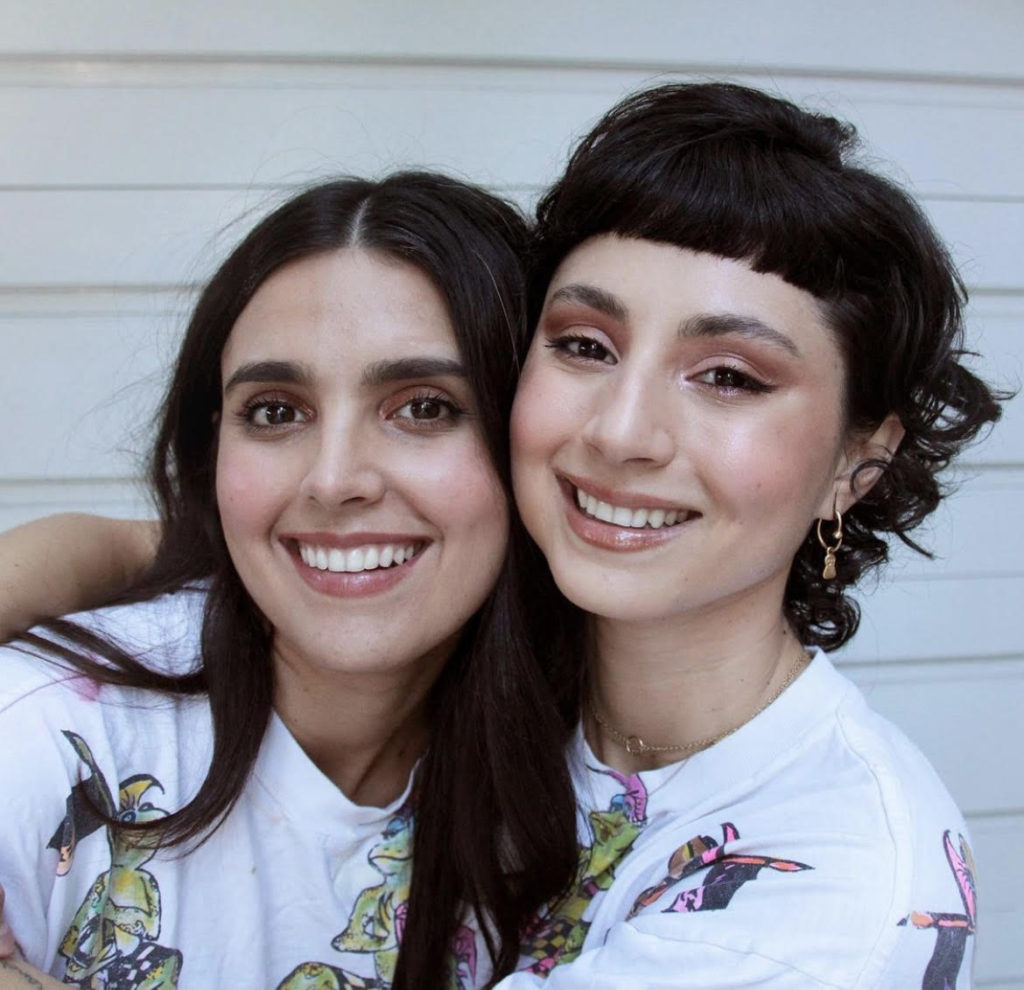
Tara: We are Celene and Tara. We were raised in Bali, Indonesia and grew up between Bali and Glendale, LA. Prior to this, we didn’t have any experience in restaurants. It was like a COVID experiment that worked out well. I was doing makeup and Celene was a doula. We lost our jobs when COVID hit and we were living together. Our partners said: “Why don’t you guys make some Indonesian food?” Celene was cooking for some families that just had babies and she was kind of getting the hang of it. Our partners were like: “You should try doing a pop-up,” because we had some other friends who were doing burgers. So we tried one, and a bunch of friends showed up. We only had two strangers that came to the first one, and we met them at the park because we were really scared to have strangers at the house (laughs). That changed very quickly because then, as were doing more pop-ups, less friends were coming and it was word-of-mouth. Our friend Wilder wrote about us in LA Taco, that exploded and then we got some really big features. We were on NPR, which was crazy. So we definitely rode that wave of the COVID pop-up train, and made a bunch of friends with other people doing it.
Now we’re 2 years in, and we’re vendors at Smorgasburg. We’ve been at Smorgasburg for 6 months now and we definitely have plans to expand.
Any plans for a future brick-and-mortar?
Tara: Yes! We’re looking at locations and trying to see something that’s viable.
Celene: Since the beginning we’ve had a very specific vision of what the customer experience should be like, and we want it to feel similar to what you’d experience in Bali. Recreating that in a brick-and-mortar space is going to require the space to kind of find us. It can’t be any spot.
Tara: We’re very particular. As you can see by the extreme setup that we have here (laughs). It’s part of the ethos of Bali: intentionality, making everything beautiful and putting a lot of hard work into everything.
What was it like growing up in Bali? It’s a dreamy place, but going there as a tourist is very different from actually living there.
Celene: We grew up in Penestanan Village in Ubud. Growing up in Bali as a child, I think, is quite magical. Magical is the word we always come back to I feel like, because Balinese people love babies and children. I think in the Hindu tradition they’re not considered mortal until they’re 108 days old. So, they’re literally baby gods moving on the earth.
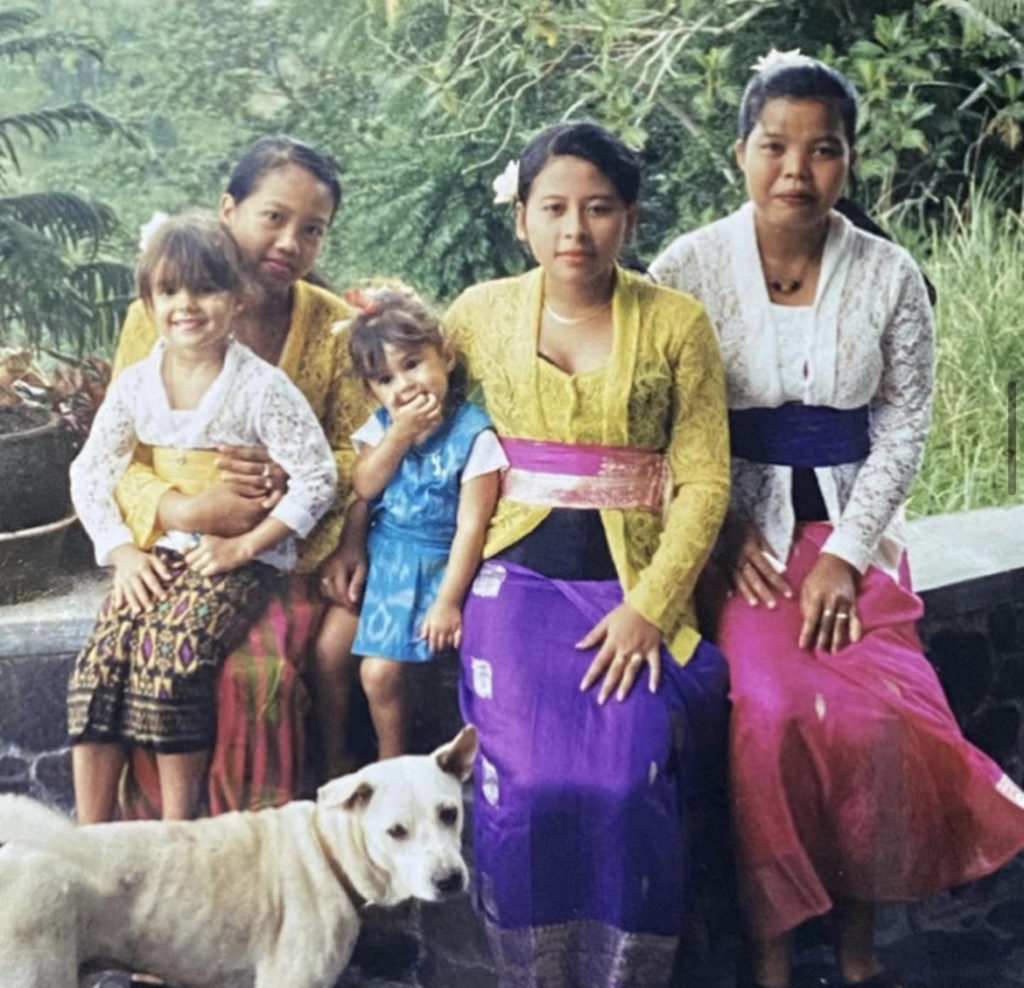
Tara: It’s a good place to be a baby.
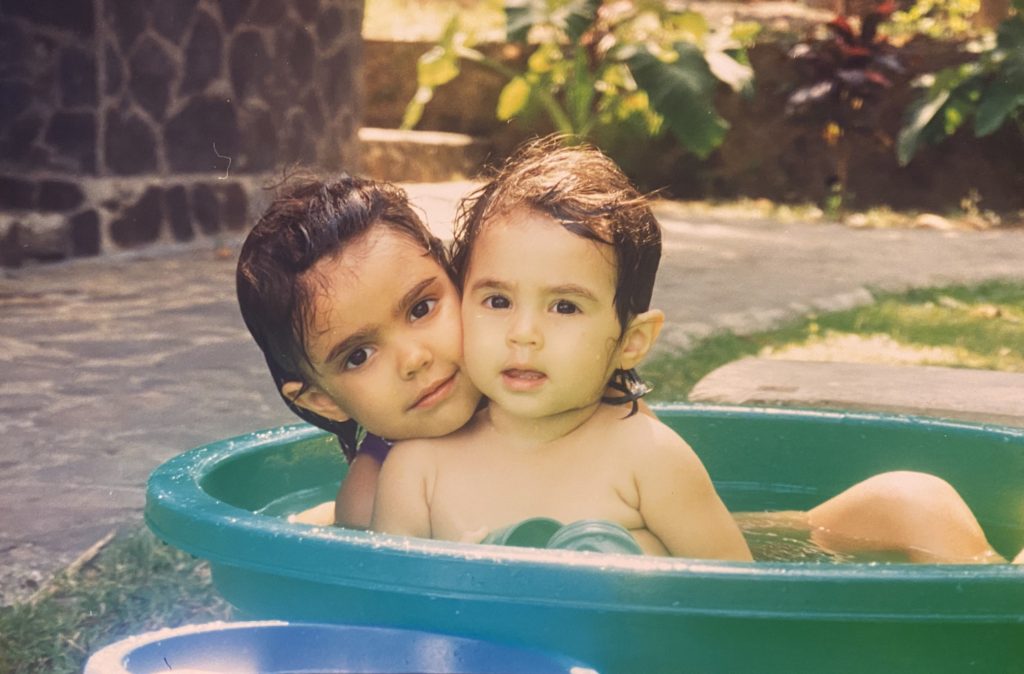
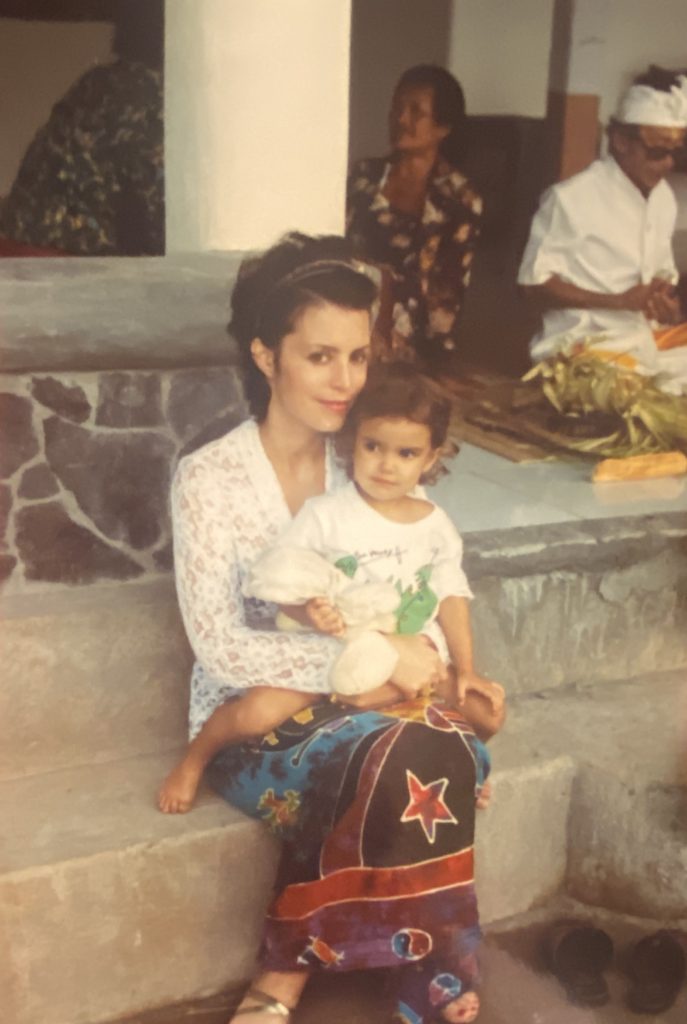
Celene: It’s a good place to be a baby. Everyone wants to hold you, love you and care for you. So you have a really strong sense of community. The way the homes are set up, they’re built like compounds, so there’s a gate at the front of the property, but within the property it’s individual houses. So you have multigenerational families living together. I have very visceral memories of waking up early in the morning and getting to cruise down to our Auntie’s house. Then, in the other direction I’d play with chickens, frogs, lizards, and I’d run away from scorpions.
Pictures of traditional Balinese compounds:
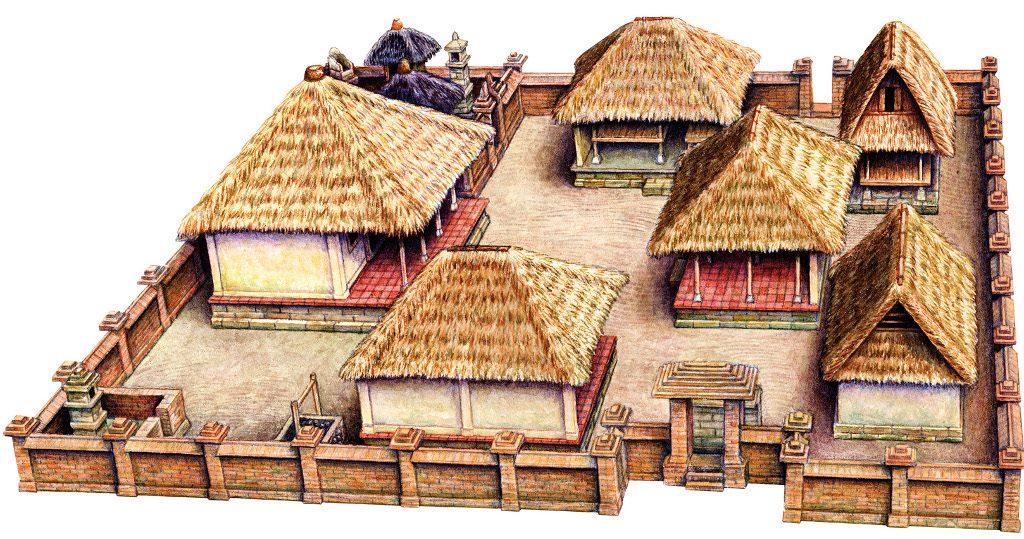

Bali is also a full-on sensory experience. Being a kid there, with rich smells, colors and textures…it’s a very creative place. We come from a family of artists, so to be brought up in an artistic community with generations of makers was unreal.
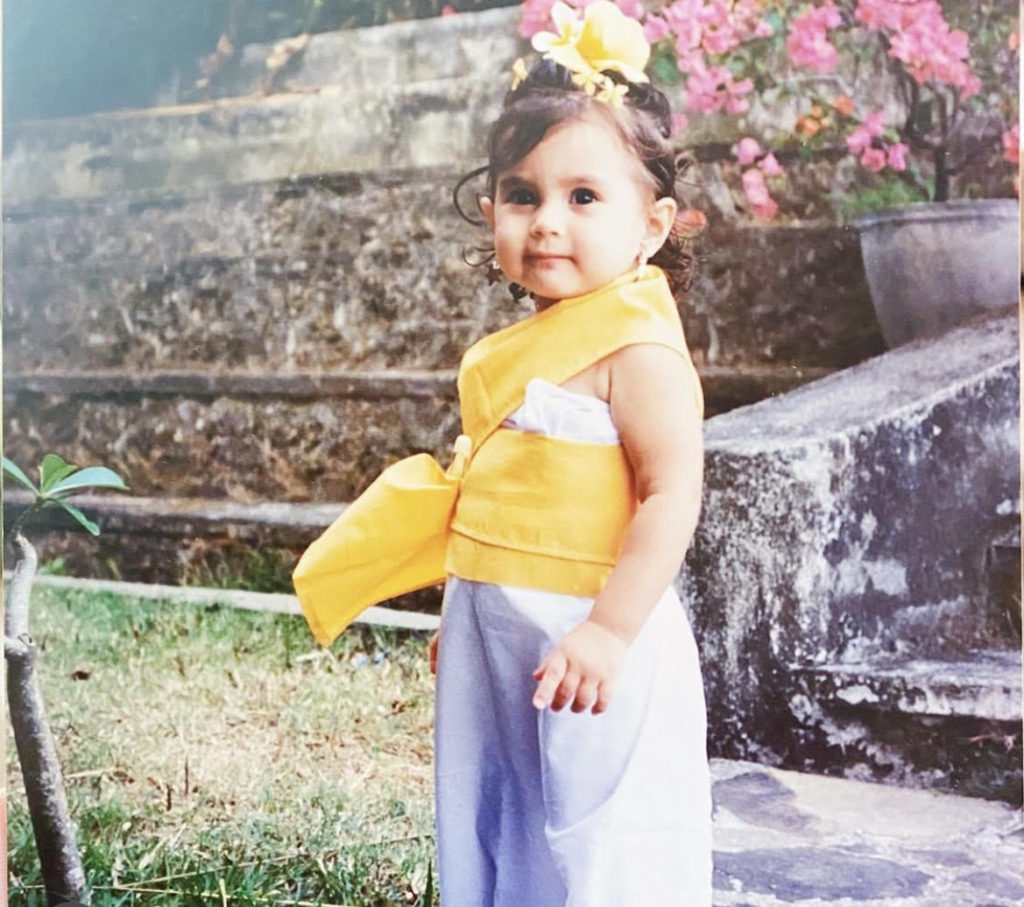
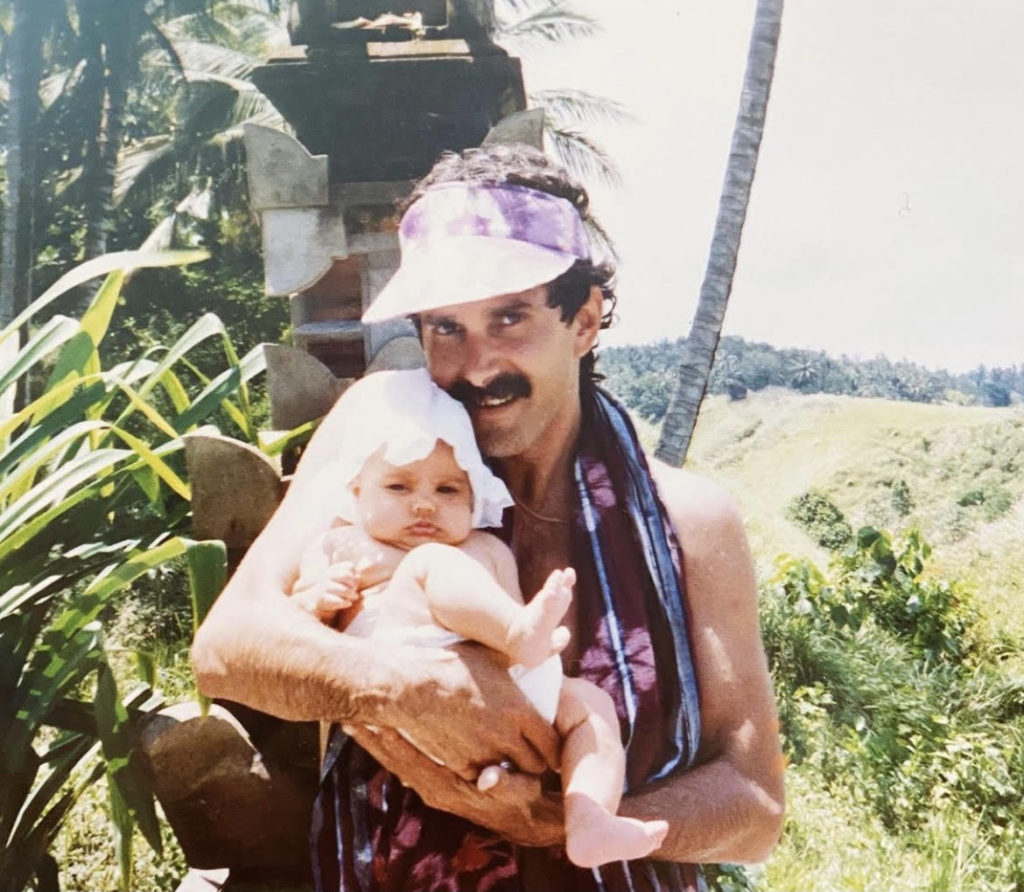
Tara: Also, something that stuck with us is that there is a strong sense of mystery in Bali because there’s a lot of superstition and there are like thousands of gods. Everything is spirited and sacred, so you kind of end up having reverence/ fear of the potential of everything. But it’s like a good fear. I don’t know, it’s that mysticism that the Western world is so good at crushing with their logic and science. We also grew up in a very open and spiritual family, so that was a really big part too. We used to say: “God is in my hairbrush!” and had this idea that everything was animated. That’s part of the magic too, it’s the spirit in everything.
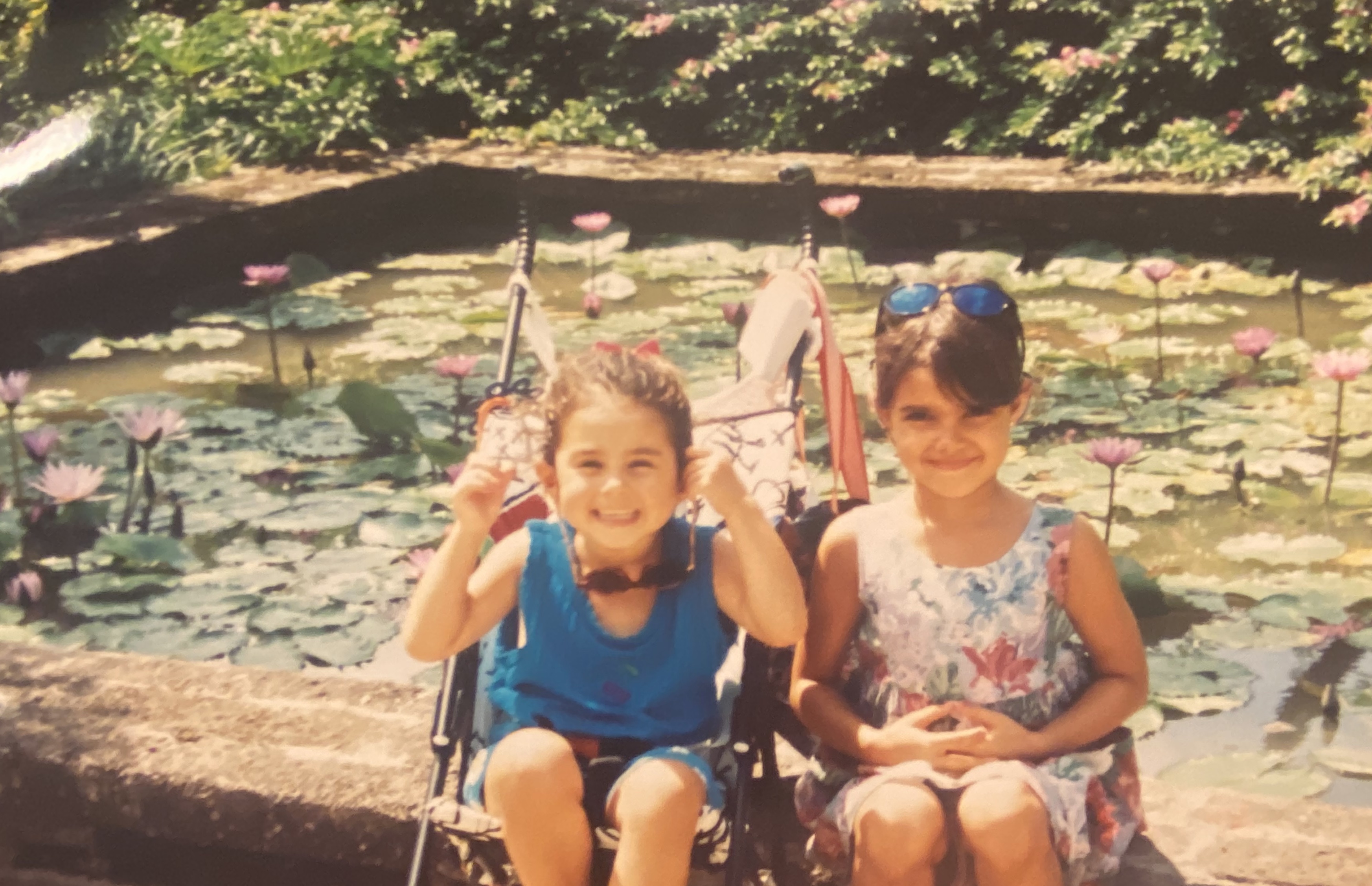
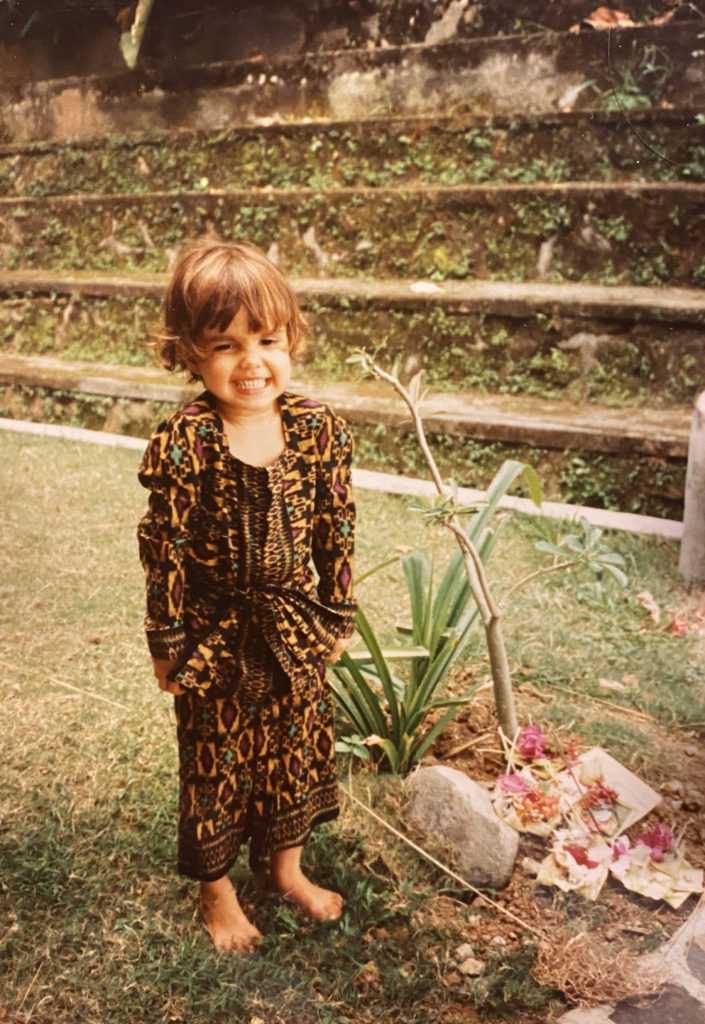
What was your earliest food memory and how did you learn to cook?
Celene: I had an ibu, she was like a caretaker who would help our mom out during the day. She would make me plain rice with small, salty, river fish and chili sauce. That was it. My memory is eating that, outside in the garden. I still love stinky, dumpster shrimp paste and salt and chili. That’s my favorite kind of meal.
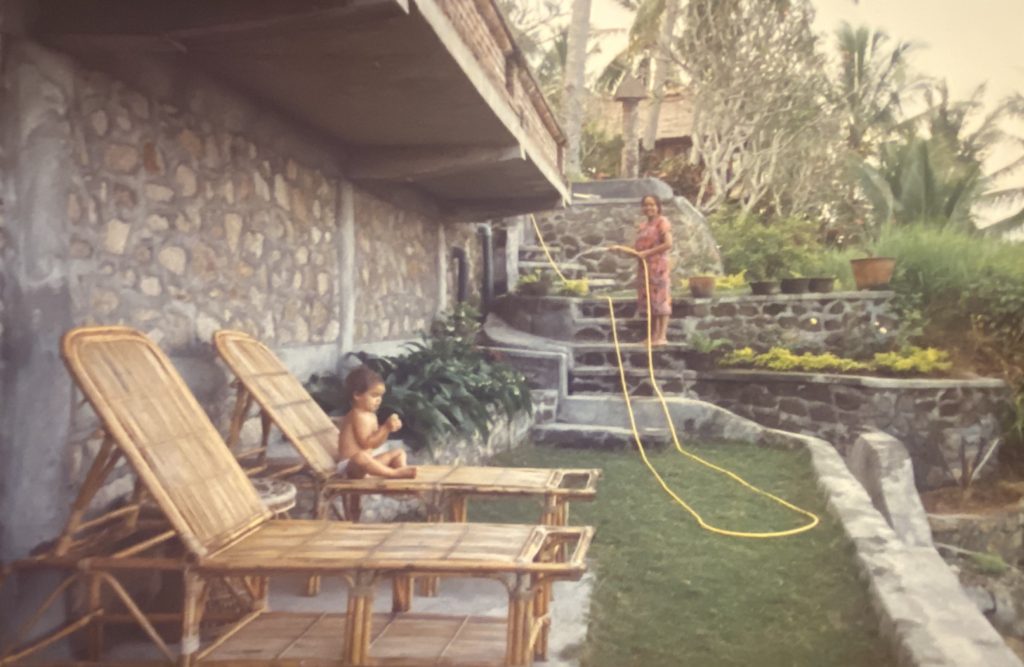
As far as the cooking goes, our dad remarried an Indonesian woman named Diana. She really was the one who taught me how to make this food. The tradition of making this food is not science, there’s no cups and teaspoons or measuring. It’s all in digit increments, like this much water above your rice, or this much turmeric goes in this. It’s very experiential. You have to cook side by side with someone making it to get the right feel. I have a bunch of Indonesian cooking books, and while they get you in the right direction, there’s some testing that you have to do to perfect it.

But yeah, it was really Dee (Diana), she showed me how to do it. And then living here in LA, the greatest challenge has always been getting access to fresh ingredients. We don’t use powder turmeric, or powder ginger. It took a long time to find fresh Galangal, which is a very unique spice, but it’s very important for getting this ripe, but sharp flavor in our rice. That was like a decade of hunting (laughs), but it all kind of unfolded in the right timing so that we could figure it out. The last thing were the banana leaves, we found them at a great Mexican market.
Tara: Celene is more like the head chef, she’s the driving force behind the recipe development, because she’s always had the interest in Balinese food.
Celene: But you handle all of our pastries.
Tara: Yeah, as we’ve been doing this, I’ve gotten more interested in desserts so I’ve been doing more of the dessert development and perfecting those methods. For some reason, it’s always really challenging to make Indonesian desserts. Nobody is making grilled cheese in Bali, you know what I mean? (laughs). For the most part, it’s labor intensive, it’s a very method specific kind of food. You do need someone to teach you, you can’t just pick it up on your own.
Celene: Another important note about Indonesian cooking, which I’m sure is similar to other traditions around the world, is that it can be your grandma, your auntie’s, your cousin… you’re hanging out the whole day making the spice paste for the meal. That’s part of the experience of making this food. It’s not supposed to be fast, it’s supposed to take its time. That’s one big adjustment that we’ve had to scale in our business. We still hang out when we’re chopping chillies (laughs), because there’s no way of expediting them.


Let’s talk about the bungkus, your signature dish. For someone who’s never had it before, what’s the best way to describe it?
Tara: The bungkus is an explosion of flavors. We like to say the flavor will punch you in the face (laughs).
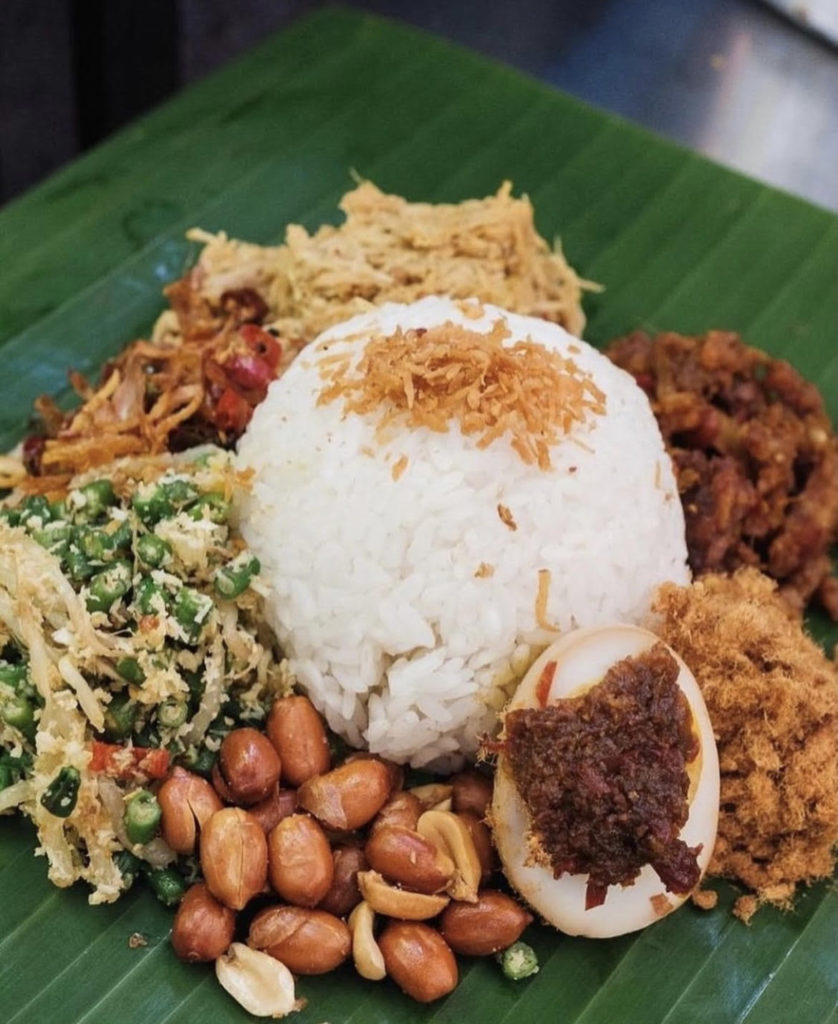
It’s a lot of different components that when they come together create a perfect bite. The way that a lot of Balinese and Indonesian food are designed is to take a little bit of everything and eat with your hands, all in one bite. That’s how the bungkus is designed to be: you take a little bit of the urab, a little bit of tempeh, some chicken, some rice, you mush it together and eat it. You have a lot of coconut flavors, lemongrass, Makrut lime… We use fresno chillies, Thai chillies, shallots are a huge flavor there, but all of the shallots are cooked way down. There’s a nice range of really deep flavors, and really bright flavors. With the Galanaga in the rice, you get this floral lightness.
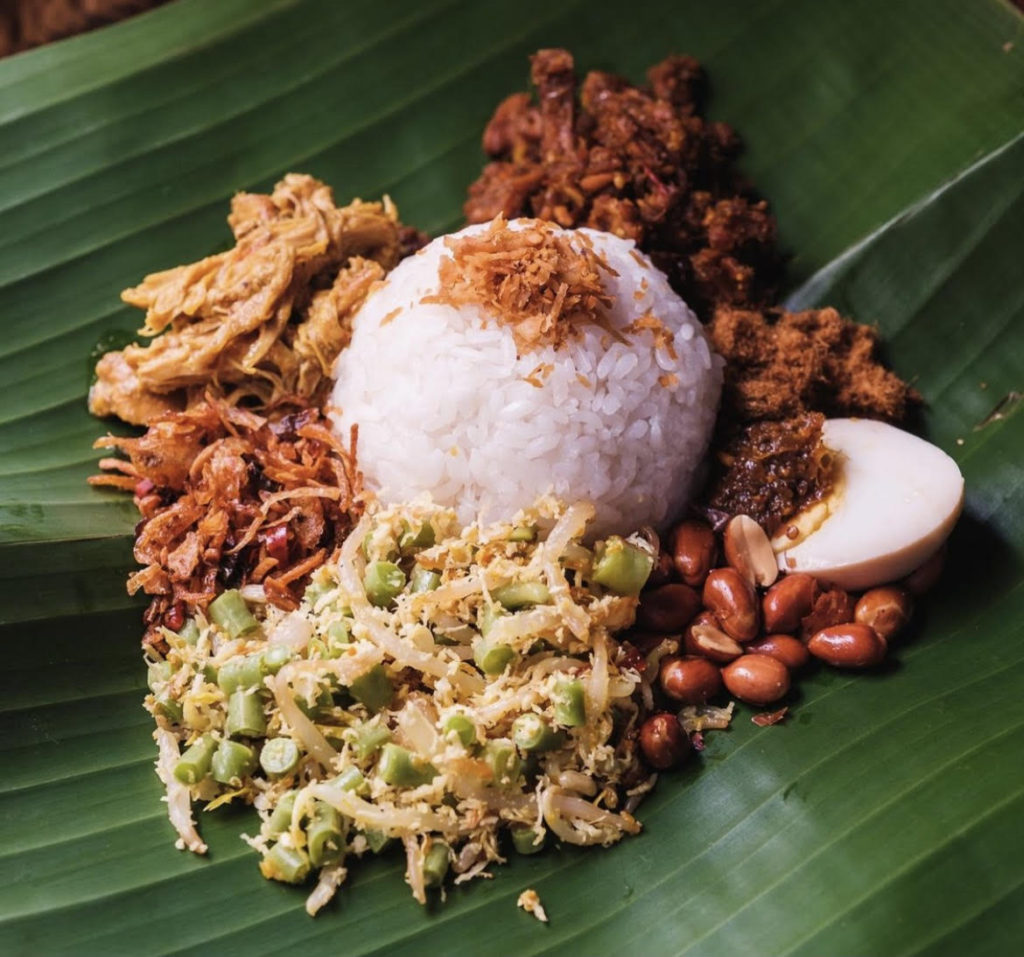
Celene: Texture is also a big thing.
Tara: Yeah, texture is really big. You definitely have that sensory rainbow experience going on while you’re eating it… I’m trying to think of what else to say. It’s a crazy experience! The portion isn’t huge, but it’s very filling because it’s so dense. There’s so many ingredients packed into one little thing, so it’s definitely something you want to savor and take your time eating. So you can experience all the little pathways throughout the meal.
What is the Kueh Lapis?
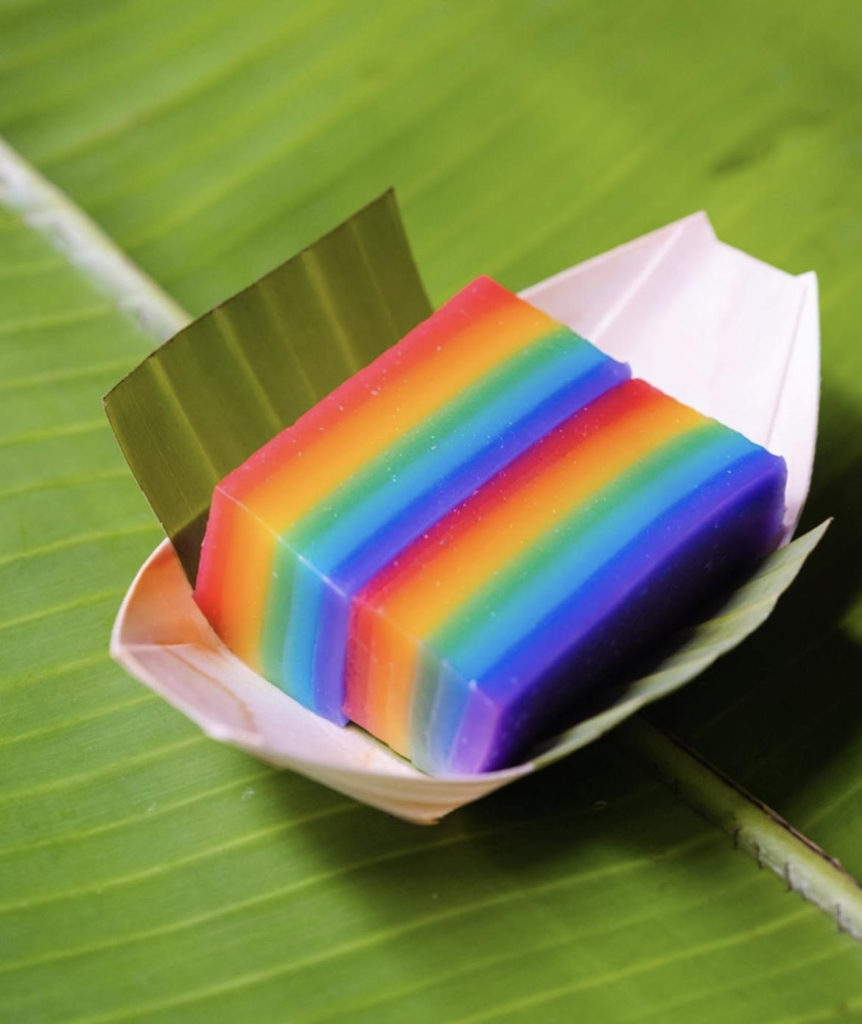
Celene: The Kueh is made out of sugar and coconut milk with tapioca and rice flour. I always describe to a Western audience that it has the texture of a sticky hand, like an old-school sticky hand that you play with at the dentist office, but you can eat it. You can peel each of the colors one by one because they’re steamed individually. It tastes like a soft, sweet coconut. It’s not very strong, I think because it’s more about the texture than it is about the flavor.
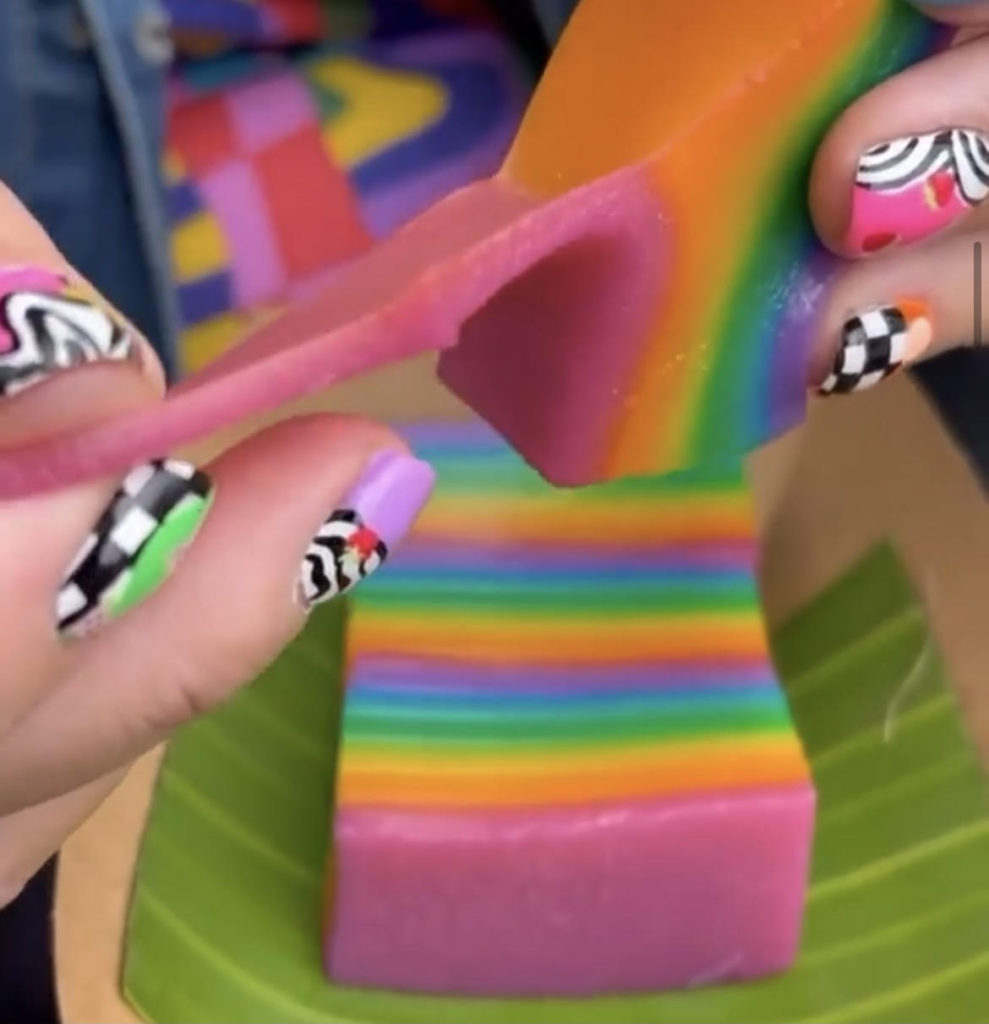
Tara: In the traditional Indonesian desserts, the only flavors you’ll find are coconut, sugar, pandan, coconut or banana. But that’s it. It’s usually in different methods of making those flavors come together. Ours is subtle coconut, and there’s no other flavor than that. It looks like it’s going to taste like a rainbow, but it doesn’t.

What’s your all-time favorite dish?
Celene: We love hot cheetos. (laughs). But that’s not a serious answer. For Balinese, I always come back to white rice, Sambal Goreng, the one that we make, and sardines. That’s a complete meal for me.
Tara: For me it’s very similar. It’s steamed rice, Sambal Goreng and the Mother-In-law egg that we make. My favorite thing in Bali is Serundeng, which is the deep-fried coconut that we put on top of the rice. To me, that’s the essence of Bali. When I taste it, I’m brought back to Bali. I’m really into the toppings. The pandan leaf is my favorite ingredient. It’s such a beautiful smell and flavor, and that goes into a lot of our desserts, as well as the rice. When you get off the plane in Bali, you smell the pandan leaf, and it’s just intoxicating.
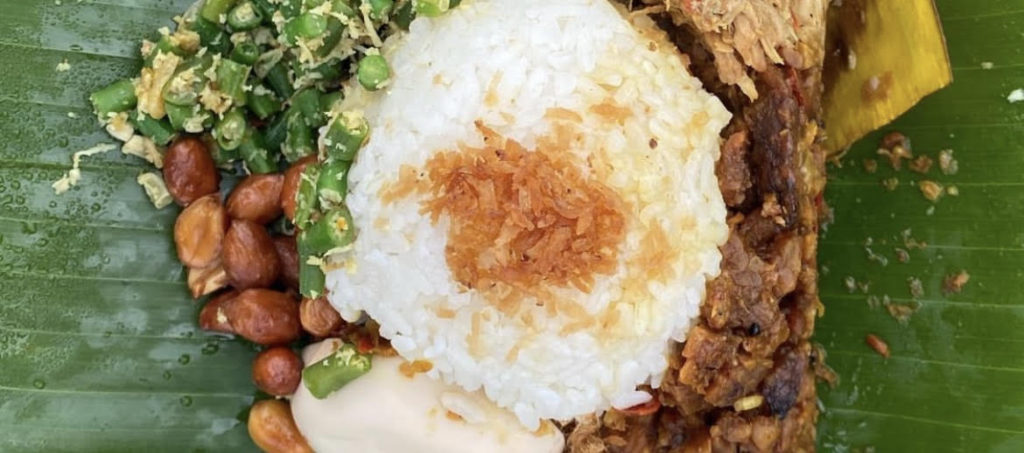
Celene: We actually use both leaves (banana and pandan). The bungkus itself is wrapped in a fresh Central American banana leaf. Pandan leaves are very aromatic and are used as an ingredient in our rice and all of our dessert items.
Note: Bungkus Bagus’ Sambal Goreng is available for purchase at their pop-ups, their website, and at the following places: Woon in Echo Park, Greenwood Shop in Studio City, and Kamp in Silverlake. You can also email them and they’ll ship it to you.
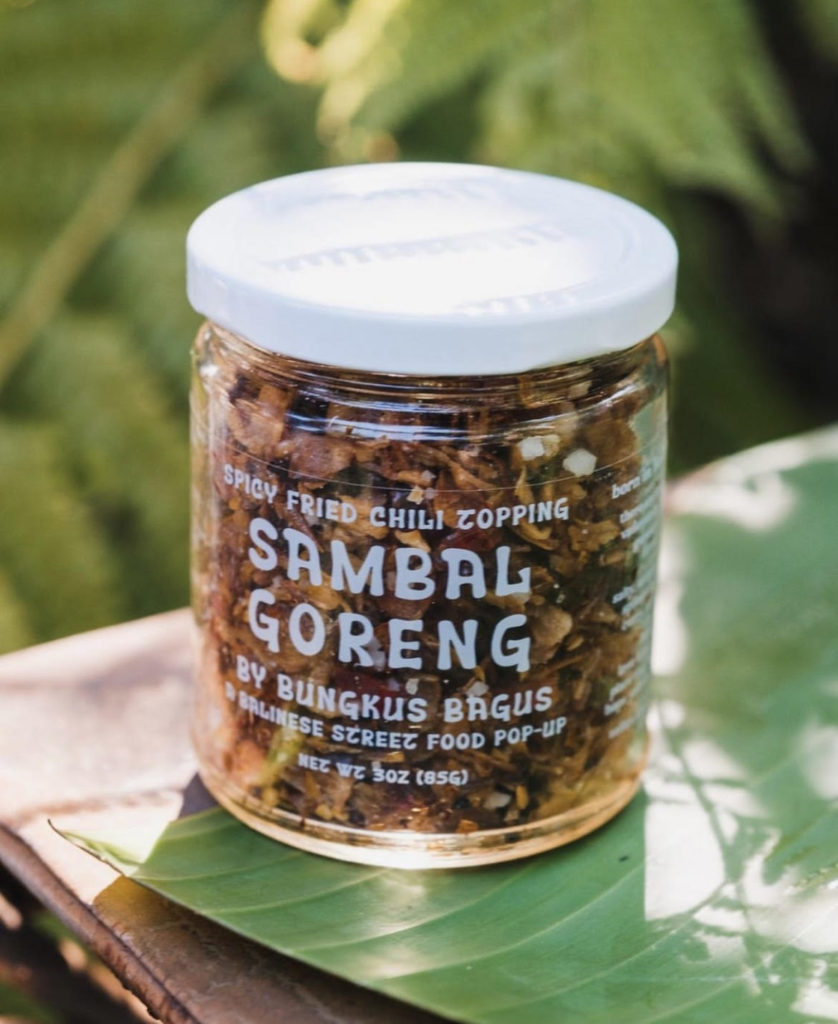
If someone reading this is planning a trip to Bali, what restaurants and places do you recommend?
Tara: We actually have a PDF of all our recommendations! If anyone’s interested, email us at hello@bungkusbagusla.com. We’ve got our driver in there, Putu Prima, who’s like the coolest guy ever. We have his Whatsapp number (laughs).
Celene: He speaks very good English and goes above and beyond for you. He has a comfy car with WiFi and Bluetooth Connex for music — it’s affordable and all around, he’s the loveliest guy. It’s about $70 USD to drive around all day, all over the island, but less if you don’t need him all day. He also runs a hostel in Ubud, if you’re traveling budget-friendly. Tell him that Celene, Tara, and Justin sent you. Remember to tip him well, even if he doesn’t want to accept it!
Tara: The first thing that comes to mind is definitely the restaurant Nasi Ayam Kedewatan, Ibu Mangku is the ibu that runs it. That’s our holy grail of restaurants. They do a really perfect Nasi campur, which is what we make, but it’s not wrapped in the leaf. It is perfection. I don’t even know how to describe it.
Celene: Ugh!! My mouth is watering just thinking about it.
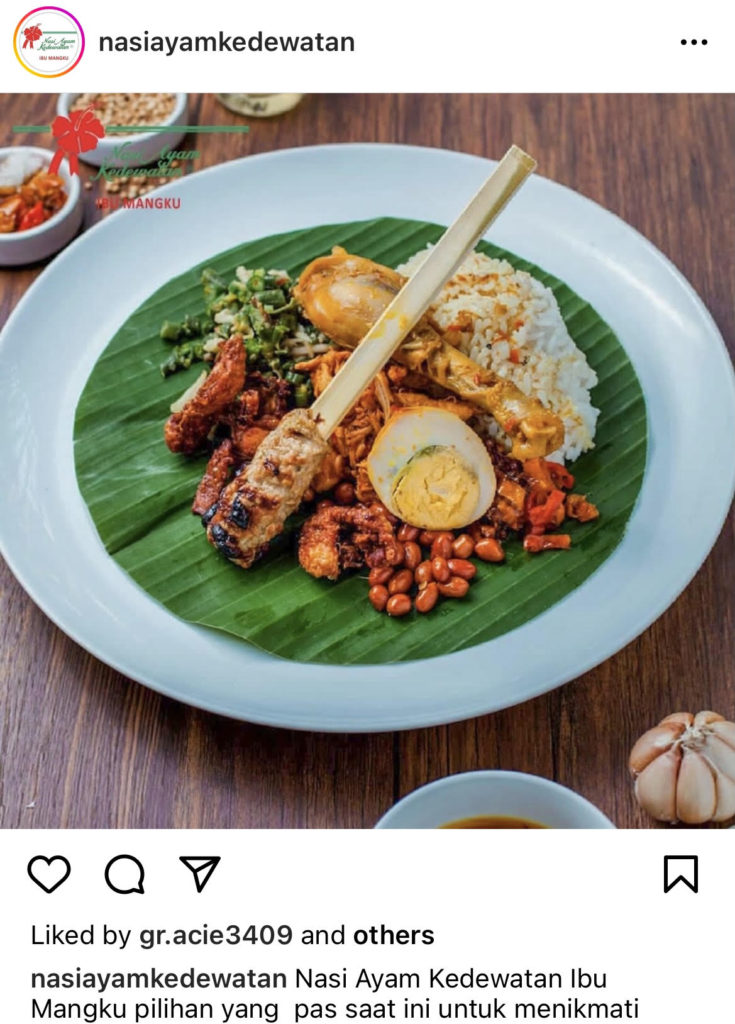
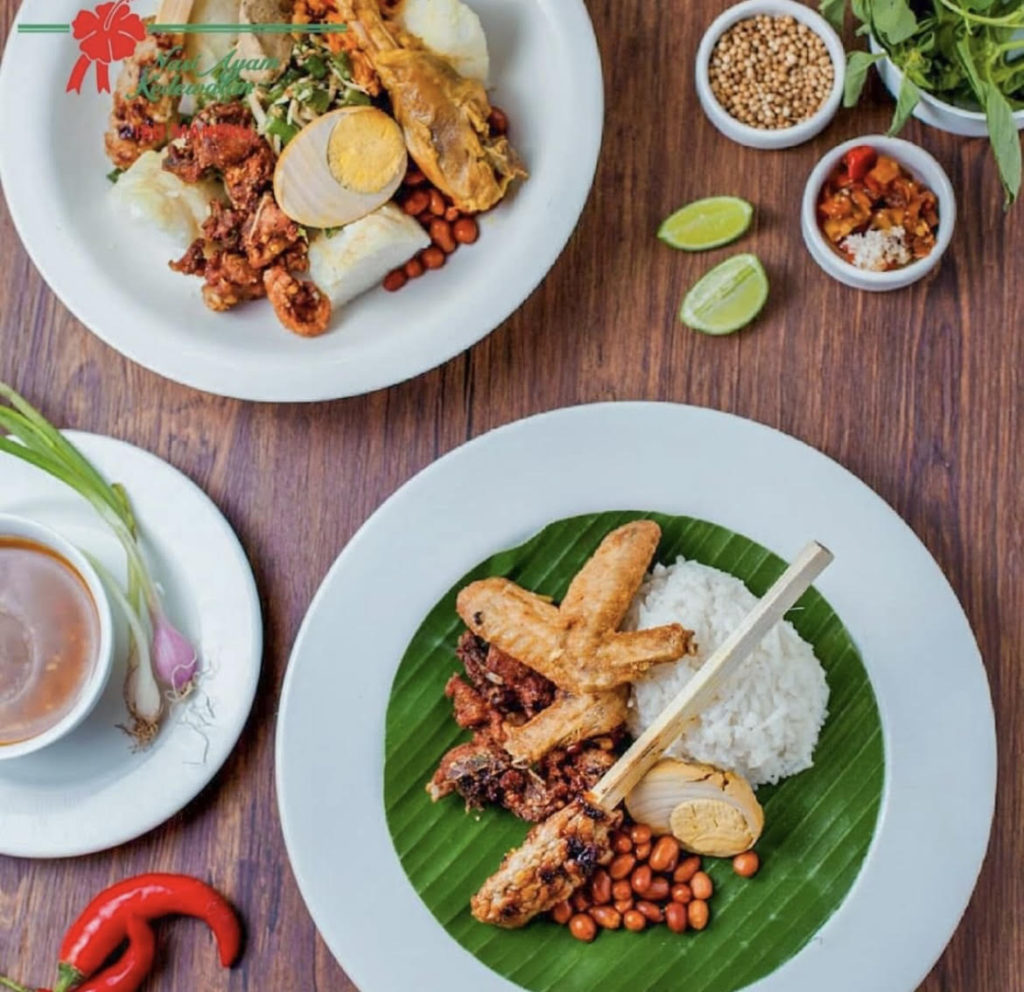
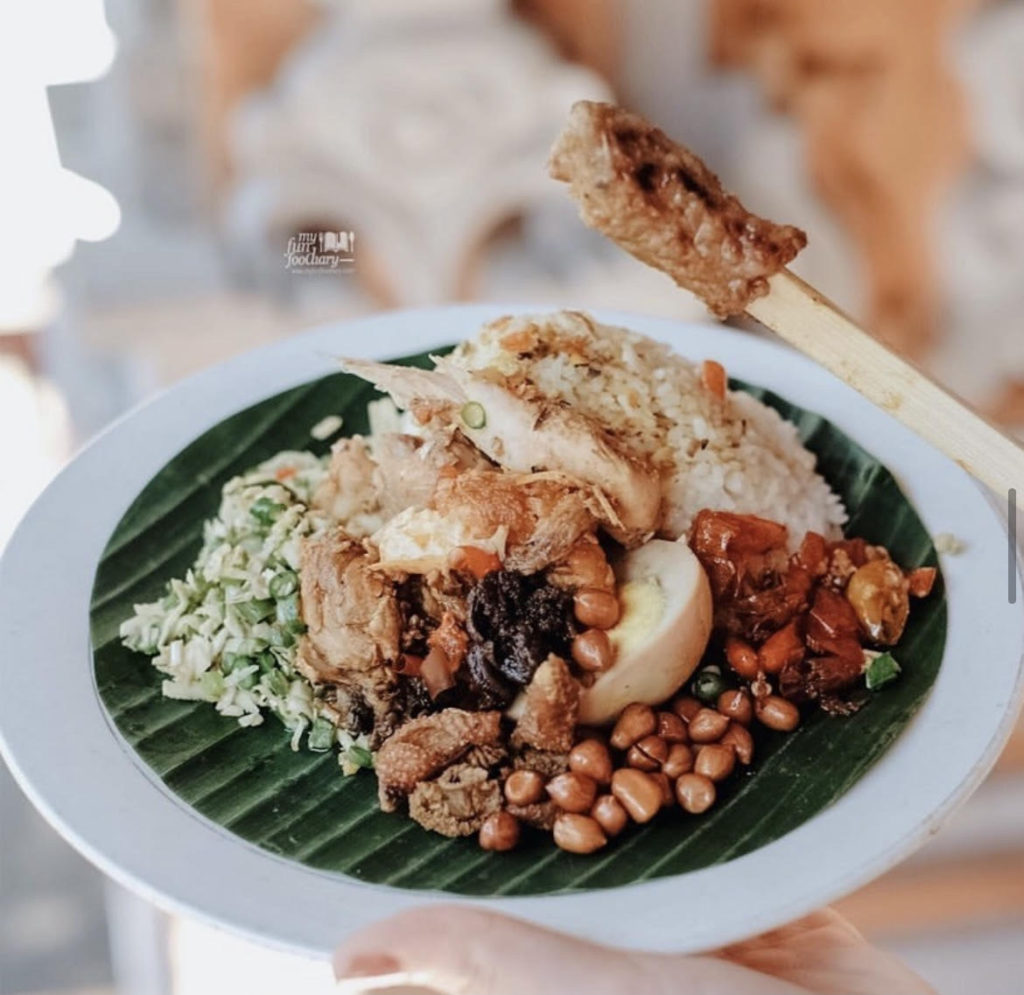
Tara: It’s not just the food, but the layout of the restaurant is our dream. It’s a bunch of little pagodas in a family compound with a little river running through it. You’re eating basically in a temple. It’s all outdoors and when it rains, you can sit under the pagoda and eat your spicy foods. That’s our ultimate number one spot.

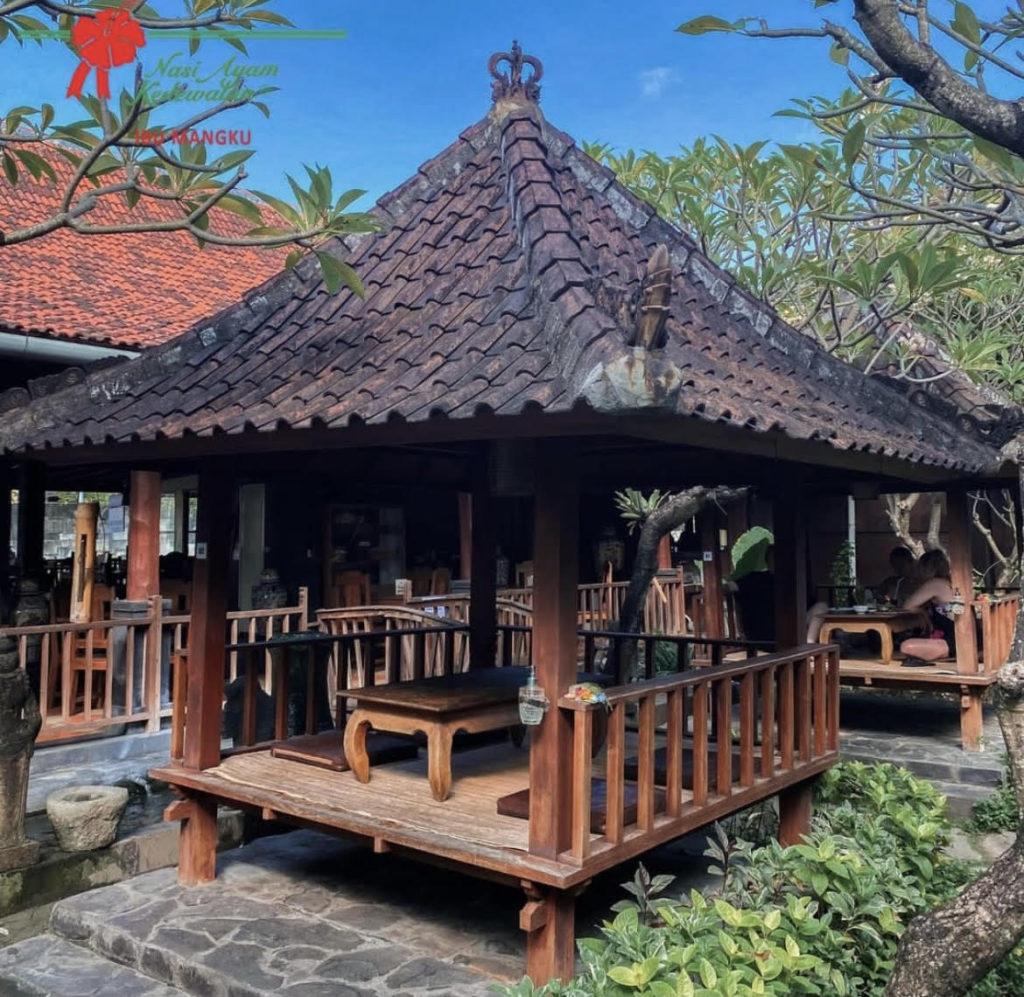
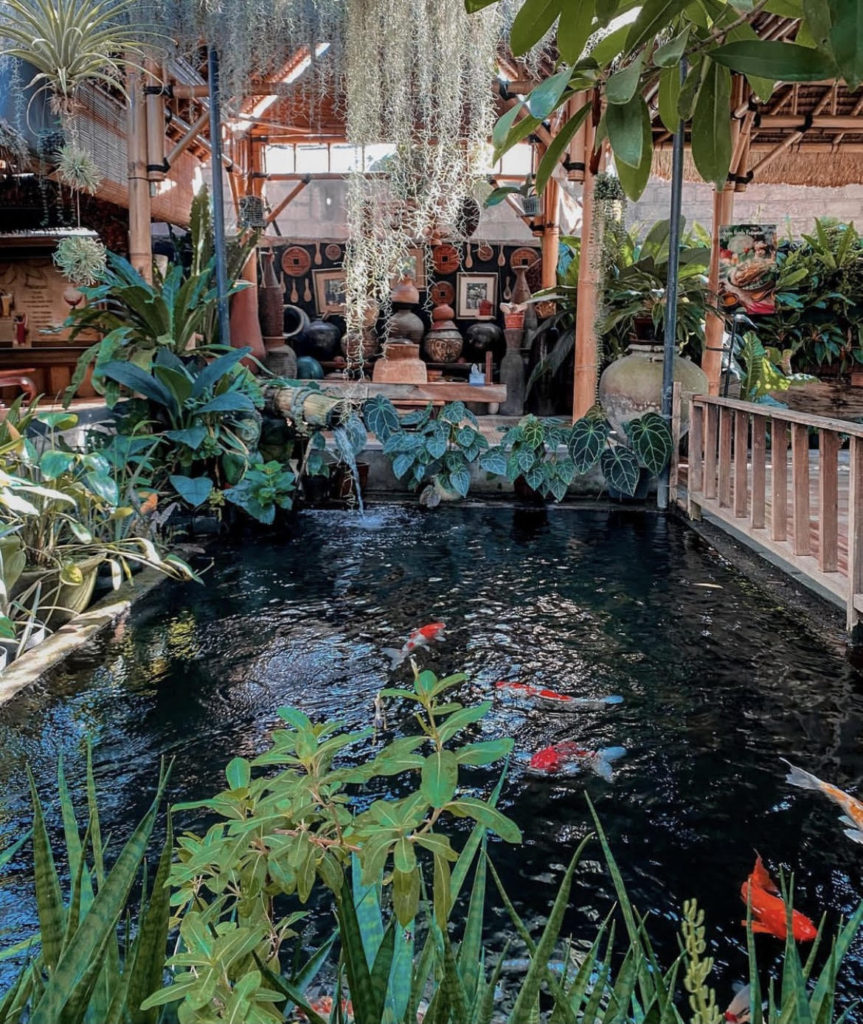

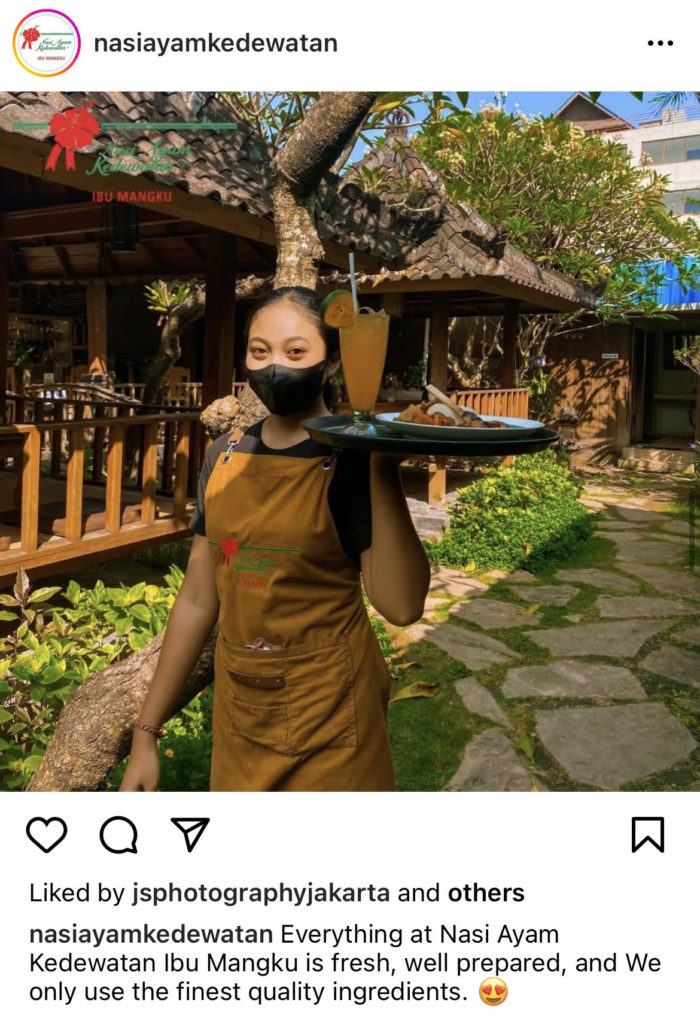
The Tirta Empul Temple is a holy site for a water cleansing ritual. We go every time we’re in Bali. We go early in the morning with a local. You go through these different water spouts where you pray, and you’re blessed by the water in this beautiful pool with fish swimming around.

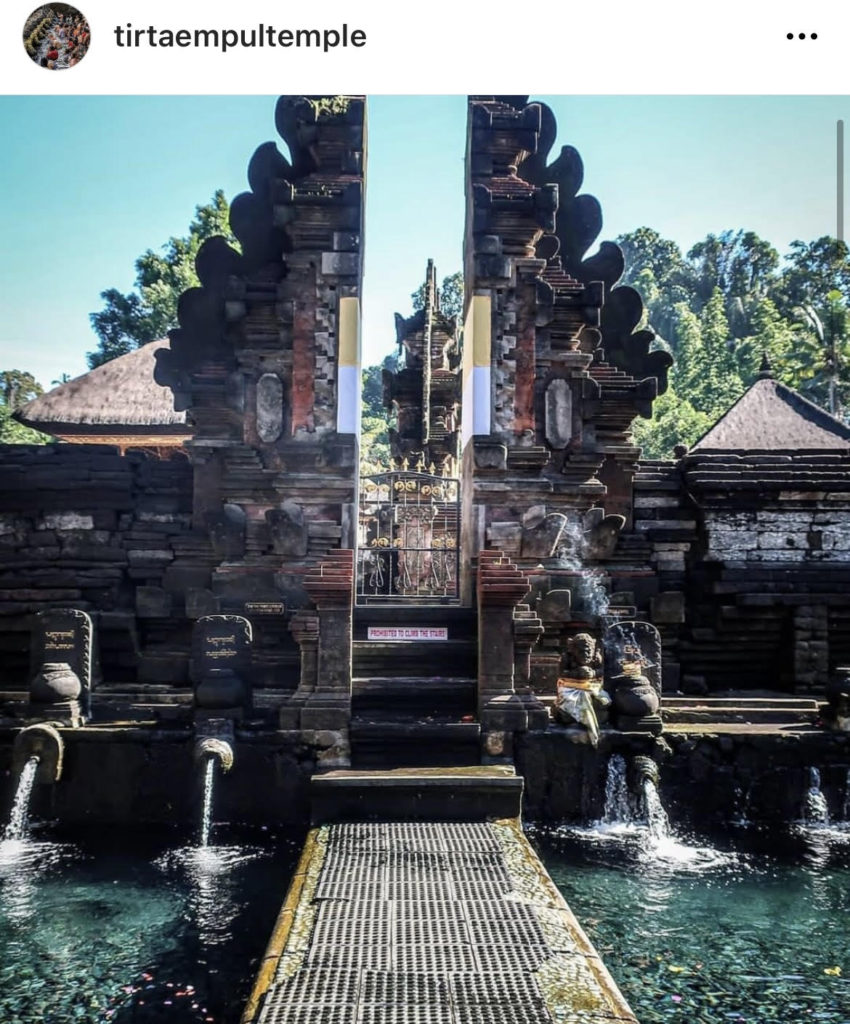

Celene: The water comes from a natural spring.
Tara: Our favorite store is called Dari Bali, which means “From Bali.” It’s a woven goods store. It’s like baskets, bags… those beautiful brown woven things that you see in Bali.
Celene: They’re made in the traditional way. The way they get their colors is by smoking honey, and the smoke colors the reeds.
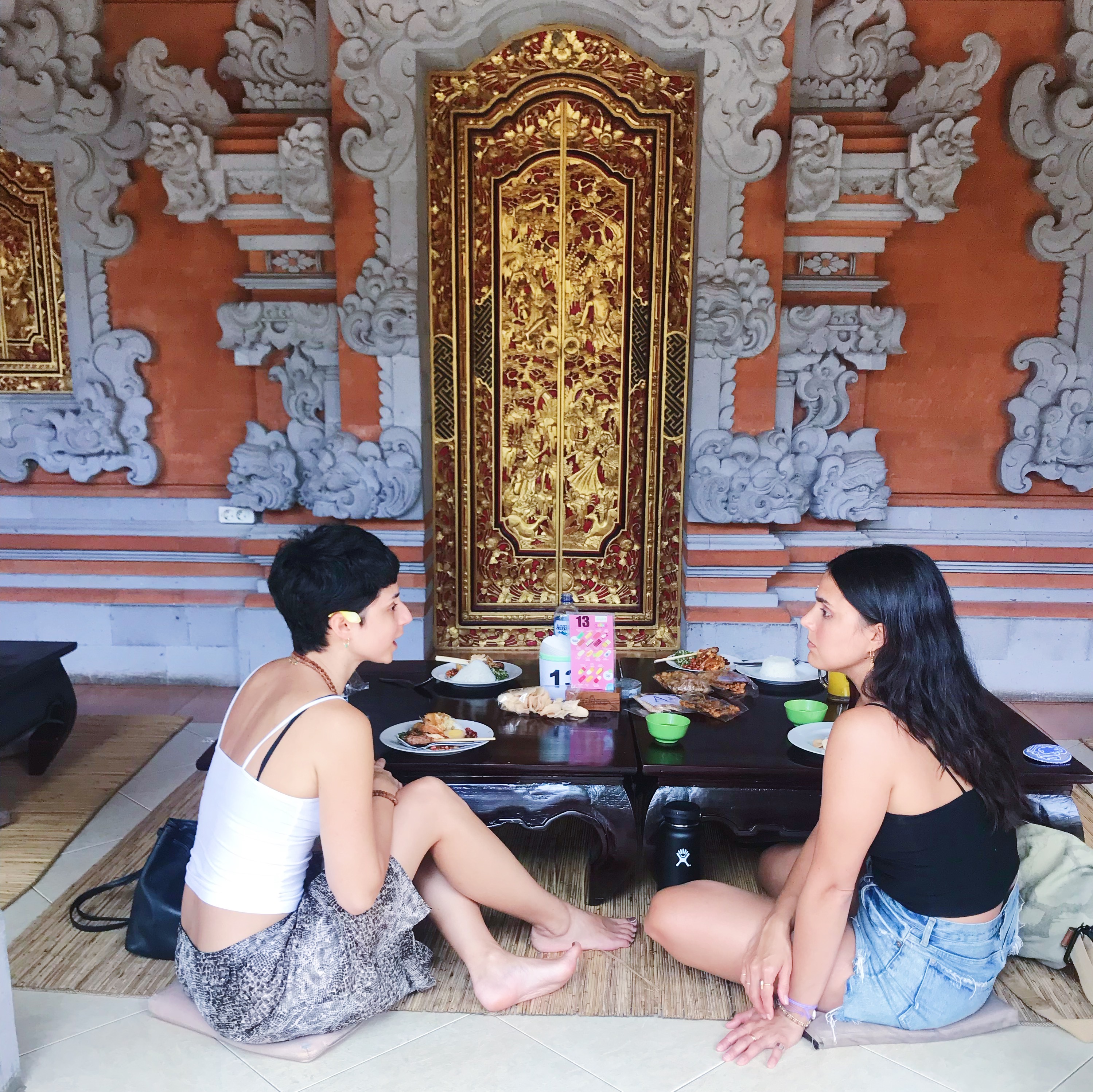
What about beaches?
Celene: When we were younger, we traveled to Kubutambahan, which is Northern Bali and at the time, it wasn’t super discovered. It’s still pretty quiet. There were still some intact coral reefs there. But we’re not big beach people in Bali.
Tara: It’s funny, the best beaches in Bali aren’t in Bali. We did a trip to Flores on the Komodo Islands. We went on the boat for a few days there.
Celene: That was incredible.
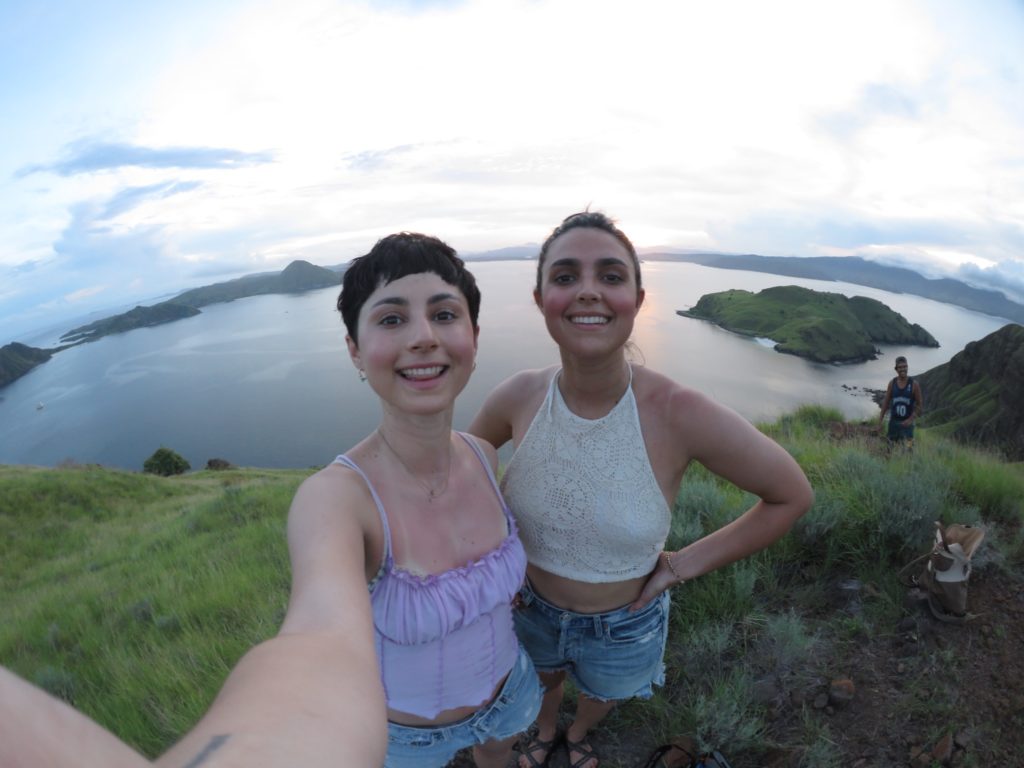
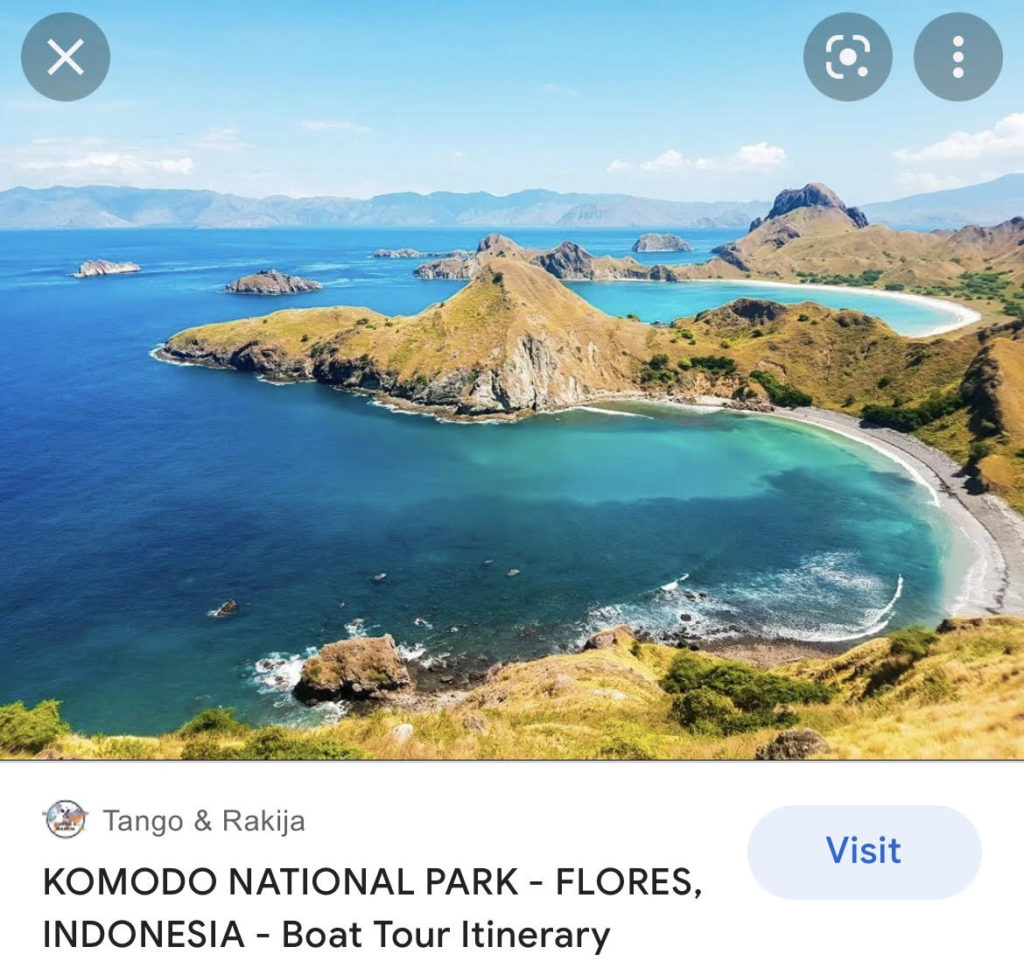
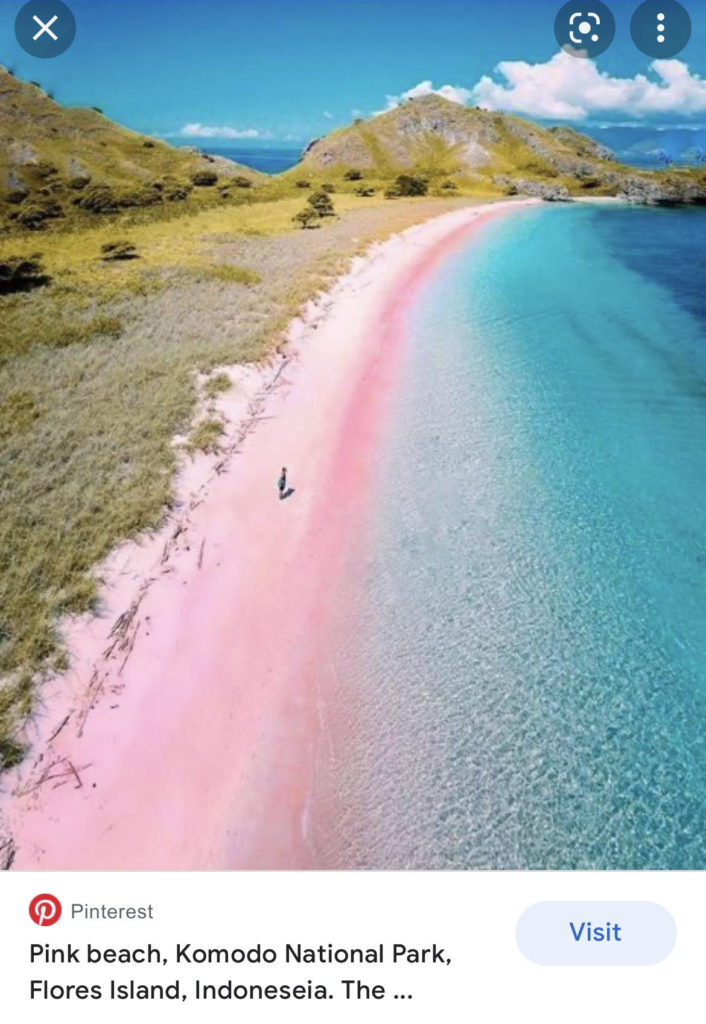

Tara: So… I think in Bali the best places are the mountains in central Bali, and then you take boat trips to other places. I mean, the beaches are still great, but I think Bali is best for the mountains.
Celene: But that’s where we grew up, so we’re kind of biased (laughs). Also, having live coral is really important, and unfortunately with big tourism it has collapsed.
Tara: Yeah, a lot of the coastline is not great. There’s a lot of cool stuff in East Bali, and nobody goes to East Bali for some reason. Everybody is crammed in Canggu and Kuta in the Southwest, and then there’s the rest of the island that nobody goes to. There’s a place called Sidemen in East Bali that’s really cool and the big volcanoes in the east too.
Celene: You can hike the volcanoes.
Tara: Yes you can.

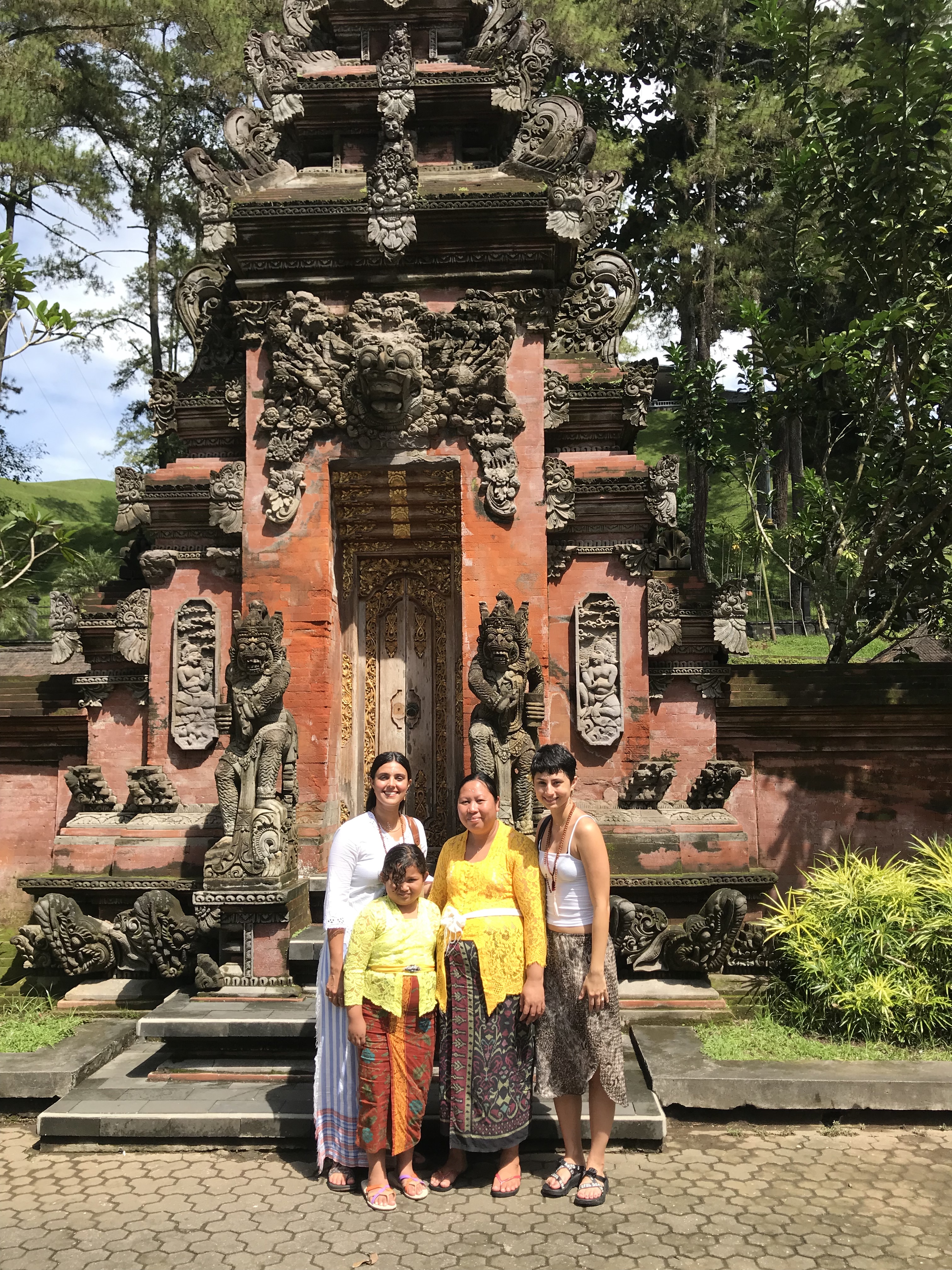
What do you like about living in LA?
Tara: Everything!
Celene: I think for a while I wasn’t excited about LA, but now I really love living in LA. Tara is also back here. She was in NY for 5 years, so the city is not the same without my sister (laughs). LA has gone a bit through a Renaissance, being part of the food scene has really changed my sense of community and belonging, because I feel like I’ve found my people. There’s so much more to do. We really love working hard and I love having a physical job, and it’s great to hang out with people who understand and relate to that.
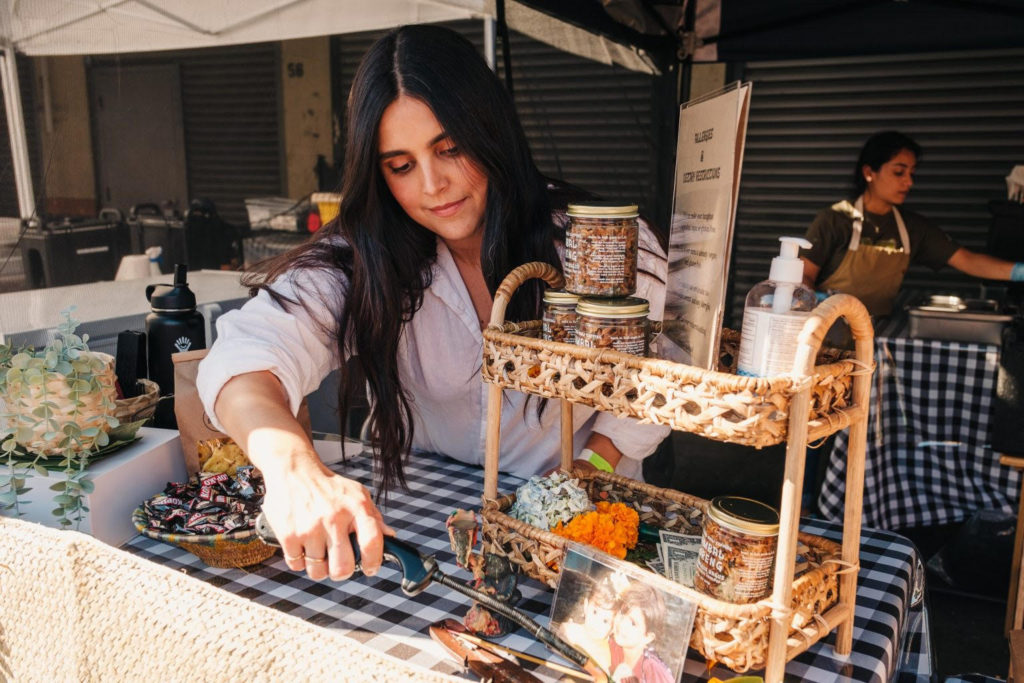
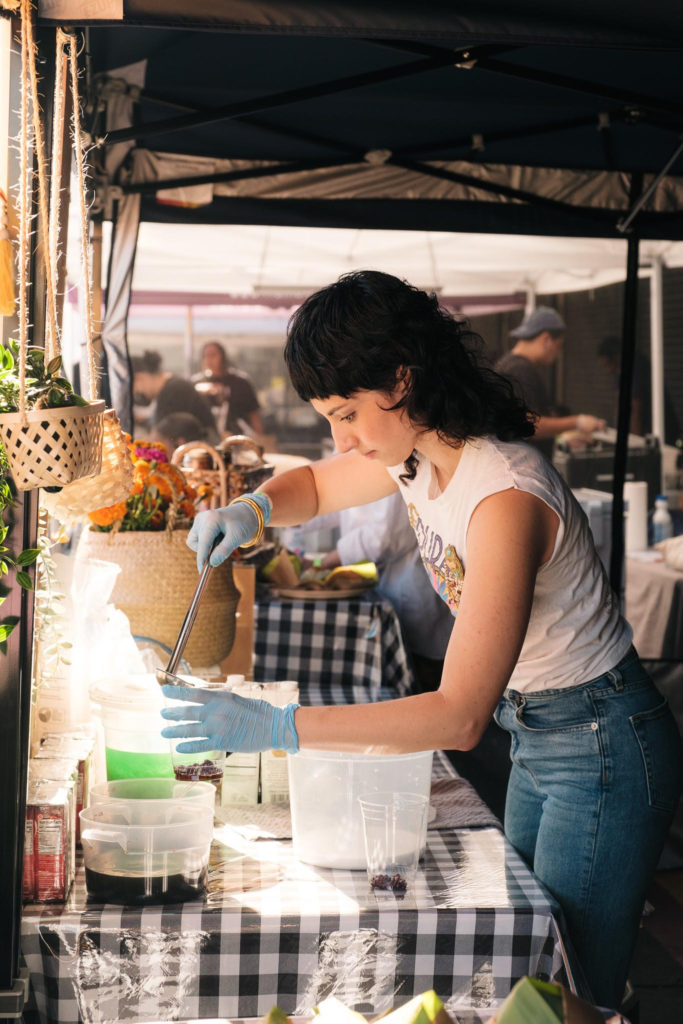
We still live on the Eastside, in the foothills of the San Gabriel Mountains where it’s beautiful and quiet. Within 15 minutes, you can get amazing tacos in Boyle Heights and you’re in a totally different world. That’s what’s really amazing about LA.
Tara: There’s always something to discover and I love the environment of LA. I love the hills, the chaparrals, the smell of the hills when you’re driving… I love driving. Listening to music in the car is the greatest thing ever. I also just love Angelenos. I think people from LA are fantastic. I know there are a lot of negative stereotypes about Hollywood, and fakeness, and blah, blah, blah.
It’s such a small part of LA, and you can go and get stuck there if you want to do that. But the Smorgasbord community is amazing, these are all hardworking, awesome people, none of whom are fake or have facades. So yeah, I have a lot of pride in being an east Angeleno. It’s just a beautiful diverse place full of wonder and adventures, you can do whatever you want here, literally (laughs).
What are your favorite restaurants and coffee shops in LA?
Celene: There are some great Indonesian markets that we have found. One is called Tip Top Mart (Alhambra and West Covina). It’s incredible. They stock all the dry goods. We love going there and picking up all the stuff that we crave, and then stuff that we need for work. We love the owners too.
Tara: We really love Dune in Atwater Village. For Thai food, I really love Night + Market. Ruen Pairs is another classic in Thai Town.
Celene: Vivian Ku, who opened the Taiwanese spots Pine + Crane and JOY, is a big idol of mine. Her food is impeccable. It’s just delightful.
Tara: We also love Alvin Cailan. He’s a really good friend of ours and the founder of Eggslut. He has a burger spot in Chinatown called Amboy. Other than In-N-Out, those are our favorite burgers. We also have other friends that run a burger pop-up, Yellowpaper Burger.
Then, across the street from Amboy there’s a place called Katsu Sando. They do Japanese Mini Mart food, but it’s like an elevated version of it.
Celene: It is divine.
Tara: We absolutely love Daniel and the whole Katsu Sando vibe.
Celene: We were there a couple weeks ago, and he let us know that he’s flying ice in from Japan to make a shaved ice dessert.
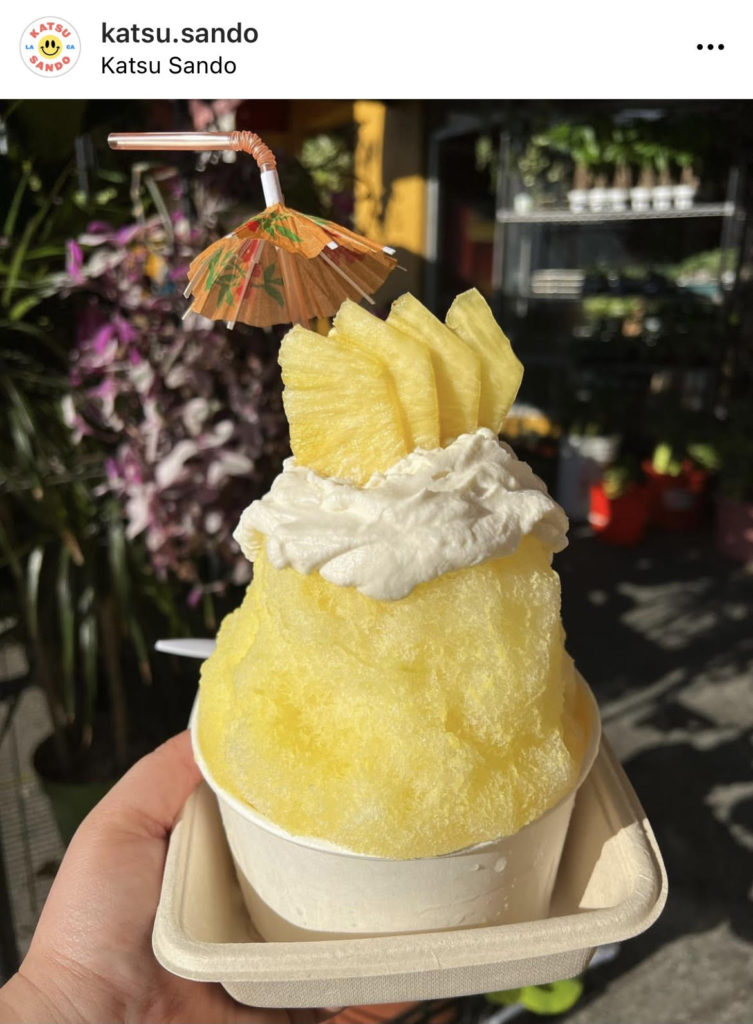
Tara: It’s next level, intentional, beautiful food.
Celene: I want it now.
Tara: We’re also big fans of Ori Menashe, who’s behind Bavelle and Bestia. He just opened Saffy’s, which is a falafel spot. But yeah, Bavelle is one of my favorite fine dining restaurants. My other favorite fancy place is Felix in Venice, it has the best focaccia.
Celene: I’m trying to think of my favorite coffee shops. I haven’t really reflected on that.
Tara: I mean… I will always love The Coffee Gallery in Altadena. It’s like the most neighborhood spot. It’s been there forever and they do open mic nights. It’s a landmark of Altadena. But yeah, I don’t really go to coffee shops… Mochinuts? Have you ever heard of it? It’s like a mochi donut. It’s crazy. They’re insane. Also the Donut Hole in la Puente .
Celene: Oh The Donut Hole!!!
Tara: It’s right by the other Tip Mart location in West Covina. There’s a bunch of Indonesian spots out there.
Celene: The Donut Hole saved us. We would drive to get groceries and then we would get a dozen donuts, and that was how we fueled through the week.
Tara: I really love Burgerlords in Chinatown. I live near there, so that’s my go-to when I’m starving. The other thing my fiance got us into are taco trucks. We love Mariscos Jalisco in Boyle Heights. They do a shrimp frittered taco with avocado and ceviche on top, it’s so good. Evil Cooks are also friends of ours, they’re here at Smorgarsburg. Everything they do is insane.
Celene: They do a chilaquile burrito that is just the best.
What about your favorite places in LA?
Celene: The Huntington Gardens.
Tara: Also, the food at the Huntington is great.
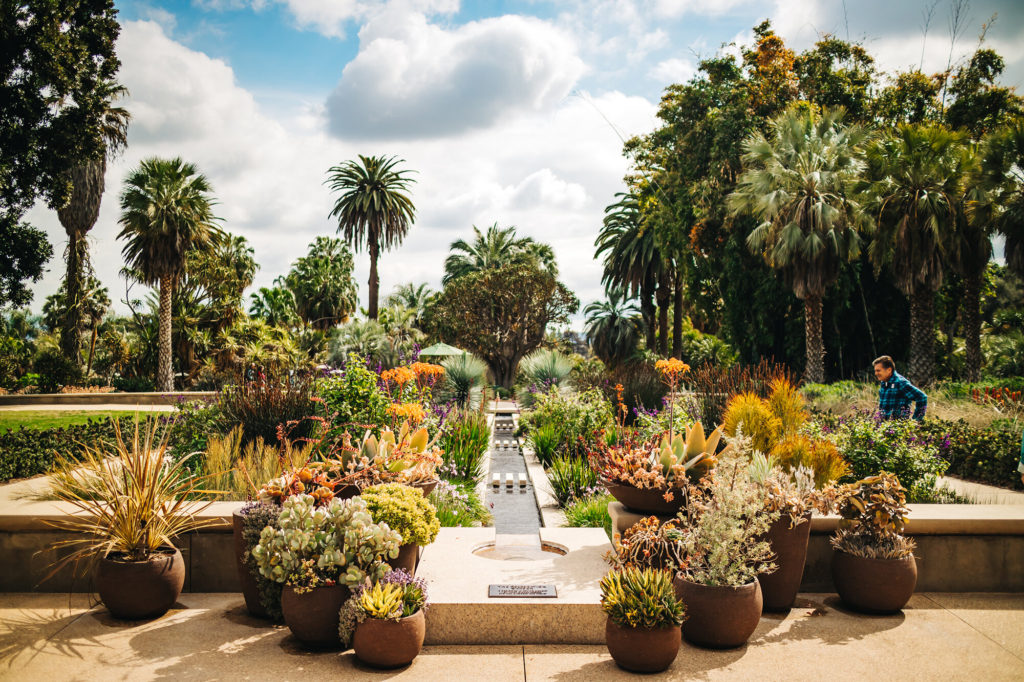
Celene: If you want to have a high-end tea experience, make a reservation at the Tea Room. It’s just such a beautiful place to go and relax. It’s not that sceny or discovered, there are a lot of older gardening folks.
Note: The Tea Room is currently closed for renovation. It’s set to reopen in Winter 2022.
Tara: It’ll never be too cool, which is the best thing about it.
Celene: You can bring a big blanket, and lie on the grass in the rose garden for like the entire day. We grew up going there as little kids, we would bring our swimsuits and run in the sprinklers (laughs). It’s a great place to take kids.
Driving up the Angeles Crest Highway. If I’m feeling a little bit overwhelmed and I need to go see a big vista, you just head up the Angeles Crest and within 7 minutes you’re really high.
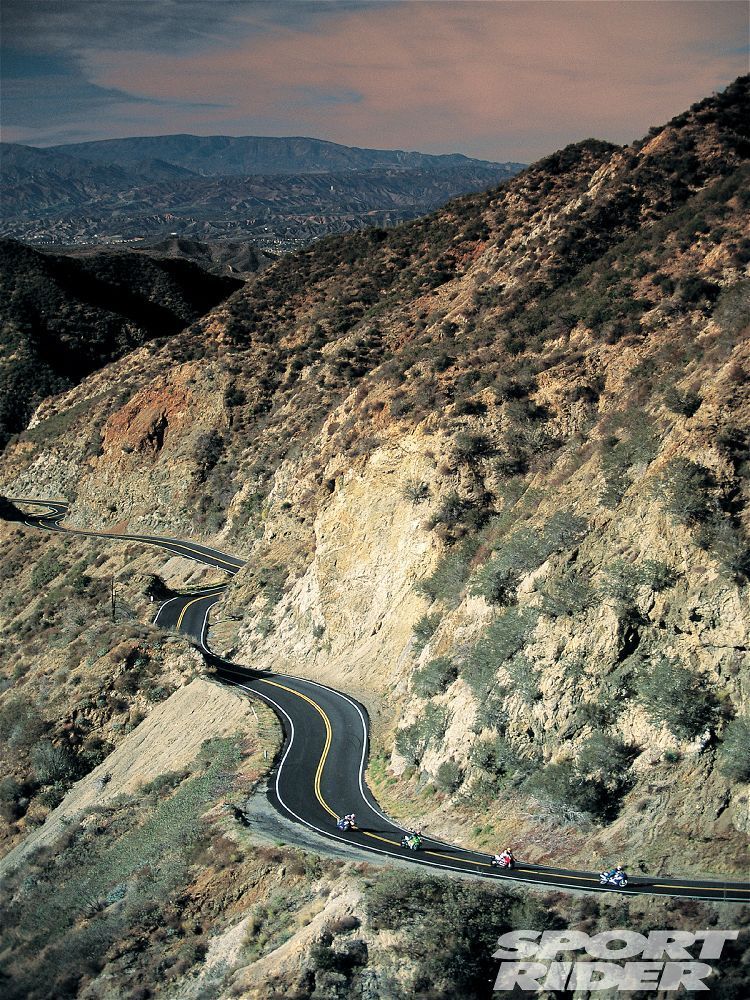
Tara: I also just heard that the Mount Wilson Observatory, which is the observatory at the top of that mountain, is a music venue and they do shows up there. We’ve never been, but I just heard that.
Celene: OMG, we need to go. But yeah, it feels like you’re in the clouds up there.
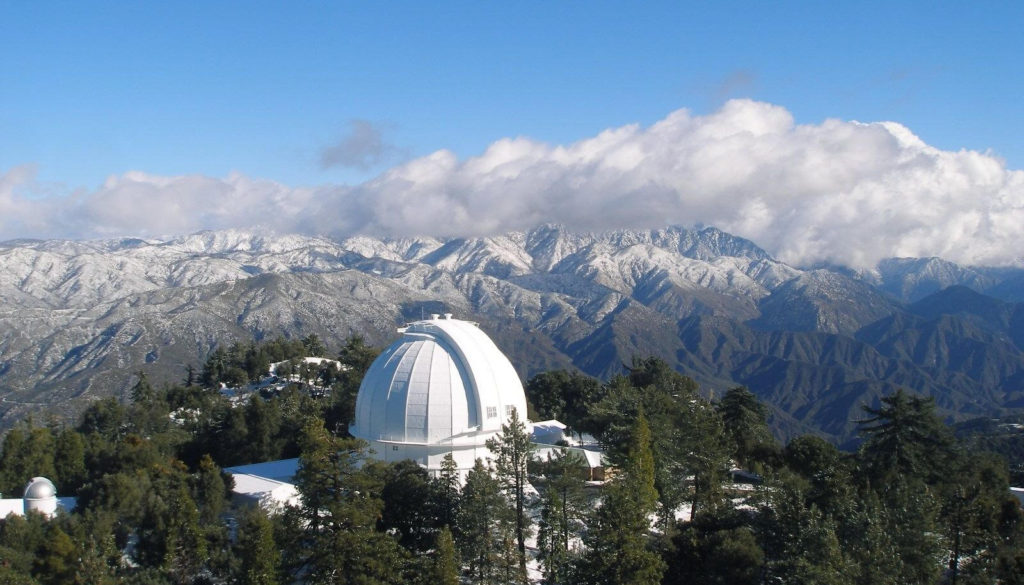
Tara: It’s remote, there’s no civilization out there. It’s very nice. My other favorite venue is Largo in West Hollywood, they do stand-up comedy and music. It’s a very intimate little theater.
Celene: I also love where we live.
Tara: We love Glendale.
Celene: We’re very interested in Altadena as a potential home for the business, because it’s right by the mountains and it still has a very intimate, community feel.
Tara: But they’re in need of better food. It’s a lot of fast-food and casual stuff.
Celene: Yeah, more options.
Tara: I love Eagle Rock, I live in Eagle Rock right now. Another of my favorite spots is the Museum of Jurassic Technology in Culver City, I haven’t been there in a long time. It is a very strange place, it’s a labyrinth of a museum where you don’t know if the exhibits are real or not, a lot of them are fabricated. It’s a lot of miniatures and shadow boxes and oddities. That’s always one of my recommendations.
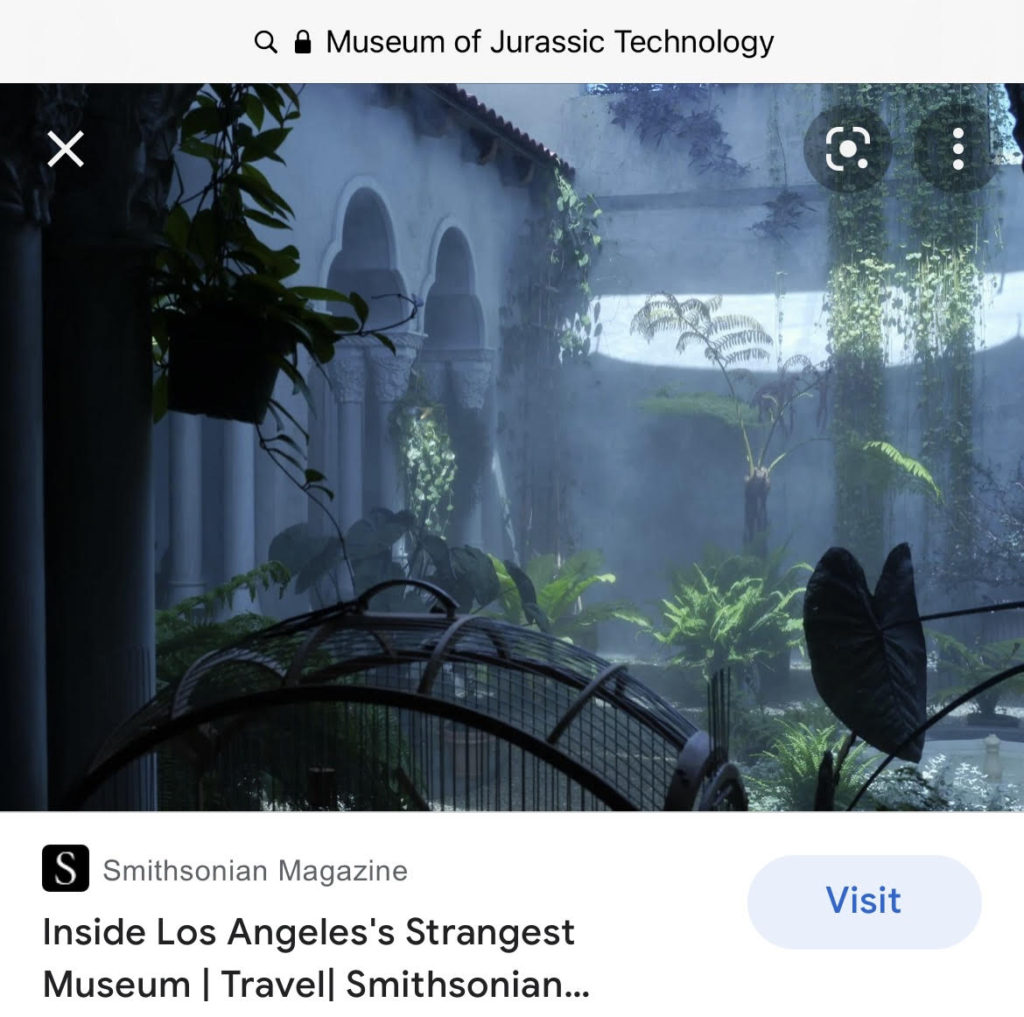
El Matador Beach in Malibu is great. I love that spot.
Celene: I really love Topanga Canyon.
Tara: Our friend Bayu has a restaurant called Topanga Living Cafe that is fabulous. Great smoothies.
Why did you choose the name Bungkus Bagus, and why is there a frog on the logo?
Celene: We brainstormed many ideas. It took a while to come up with the name, but we liked that it meant “good package.”
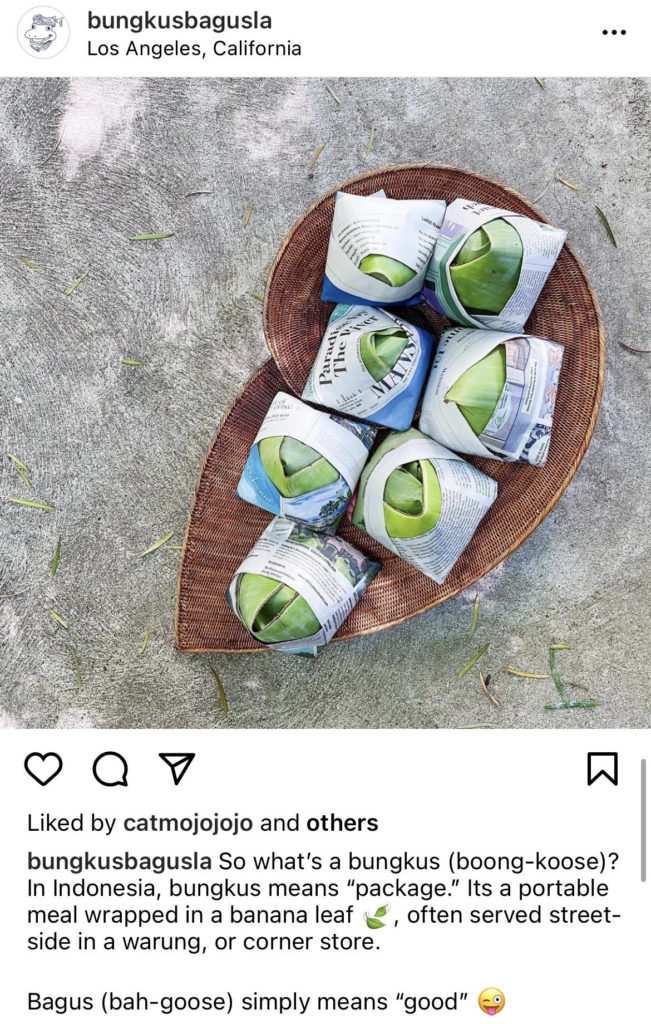

Tara: It’s got the alliteration that we wanted to be. We had a brainstorm session where we were all sitting in the living room and we were throwing out names. The other name we were going to maybe choose was “Io Makan,” which means “let’s eat.” It was fun, but ultimately, we knew we were going to make Bankgus. Also, one of our favorite Indonesianisms is when people say Bagus Kali, which means “really good.” It’s very simple, very literal.
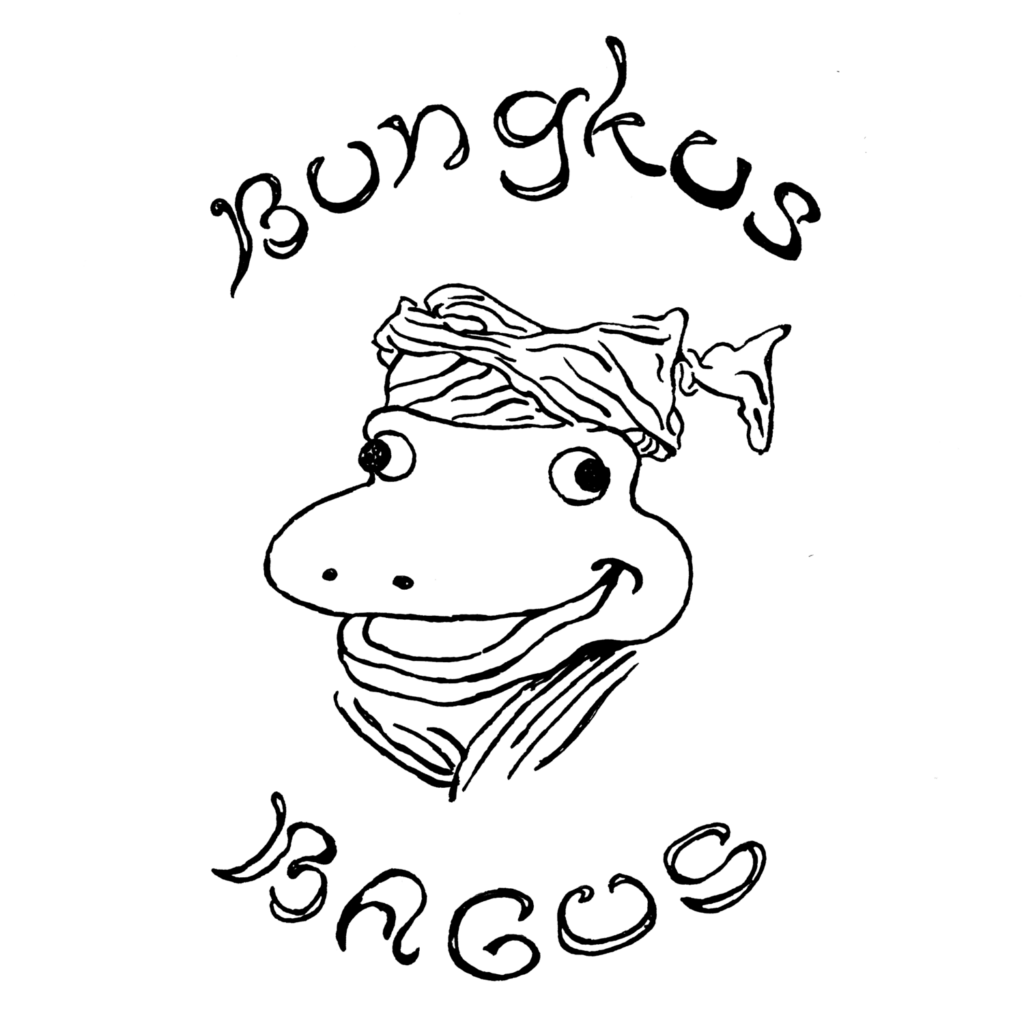
Celene: The frogs are all over Bali. They’re symbols of fertility, which felt really cool for me, because I spent so much time with moms and babies. We also think they’re hilarious. It’s really fun to ask people to draw a frog because everyone has a very different interpretation.
How does it feel to be featured in the LA Times, and to have received such positive responses?
Celene and Tara: It’s crazy!
Celene: When we started the business, it was like peak COVID, lockdown times. Articles were being written about us, and it was really surreal that we had people coming safely over to pick up meals. They were sharing a lot of their personal stories about having traveled to Bali. Some people had been there 30 years ago, and they hadn’t had this food in 30 years. Because we were so distant as a community, it made it more meaningful and deep to get to have this exchange, because we were all like in a vacuum, and it was weird (laughs). So…we’re always extremely humbled and touched. It’s an honor, and I don’t take it lightly… at all.
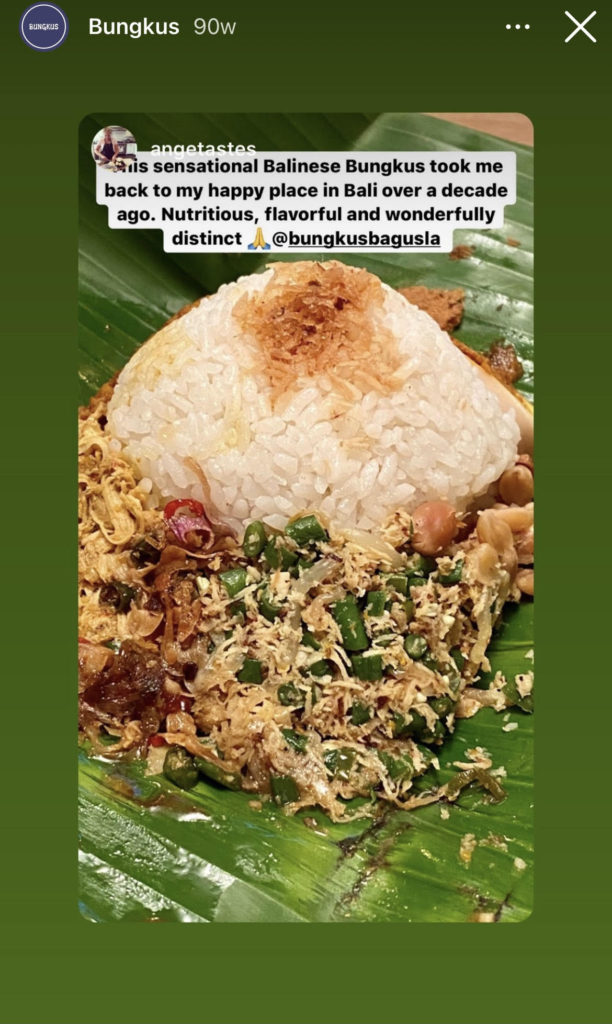

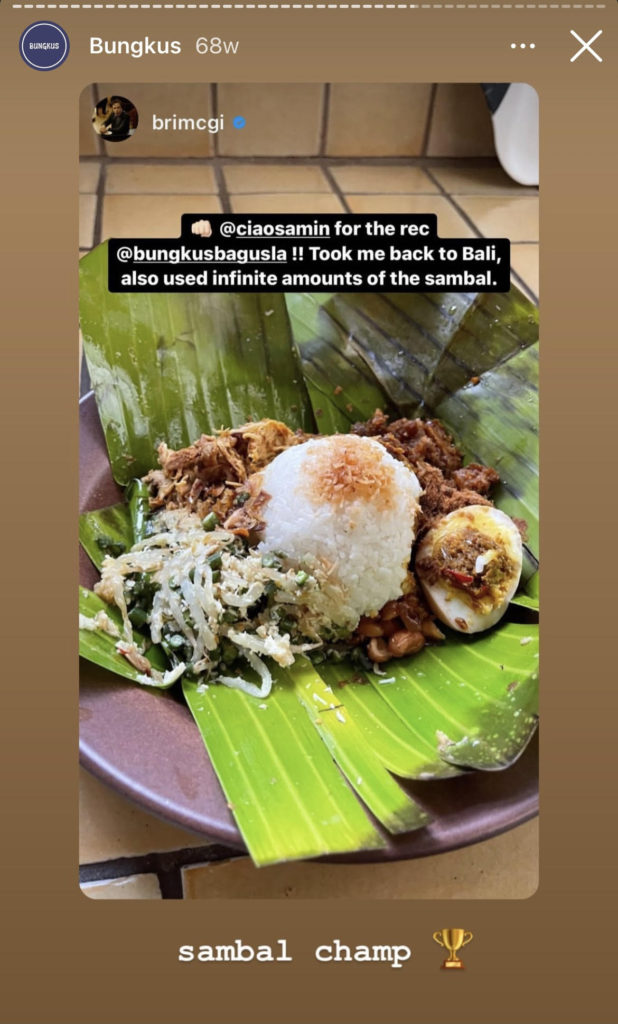

July 2020 (Bungkus Bagus’ first pop-up)
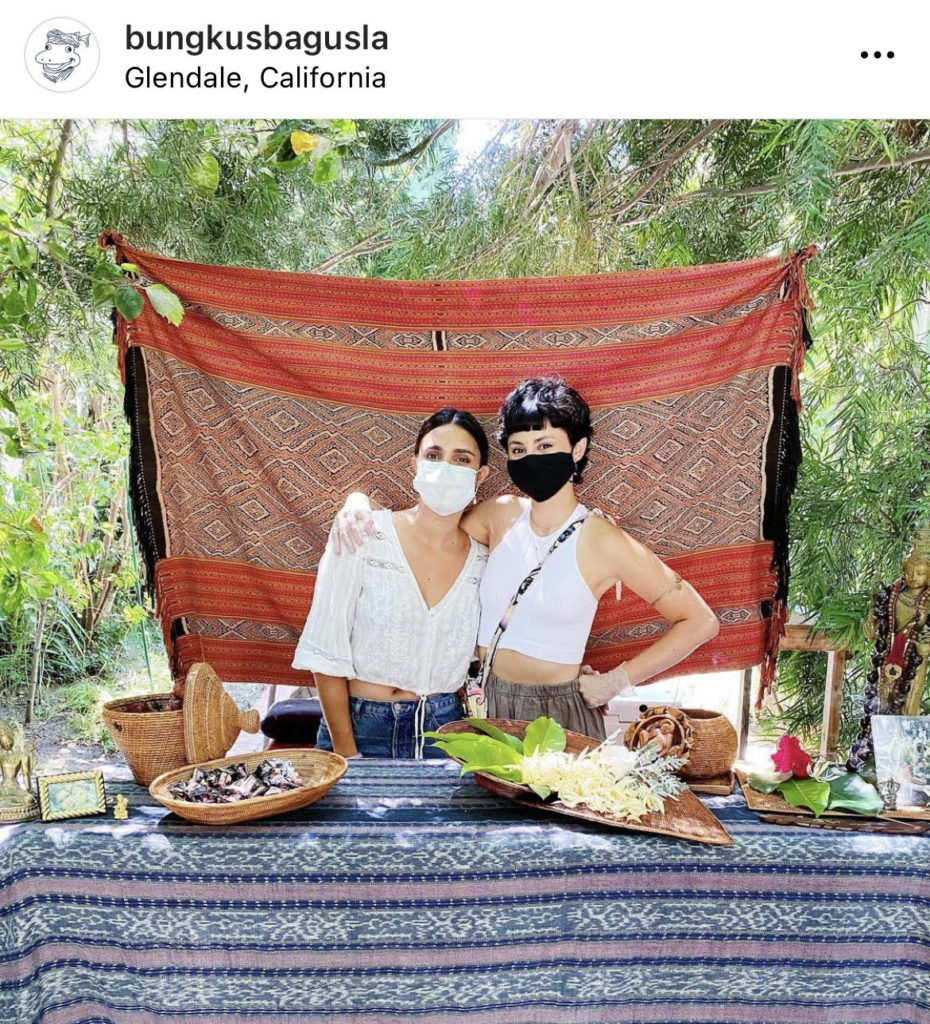
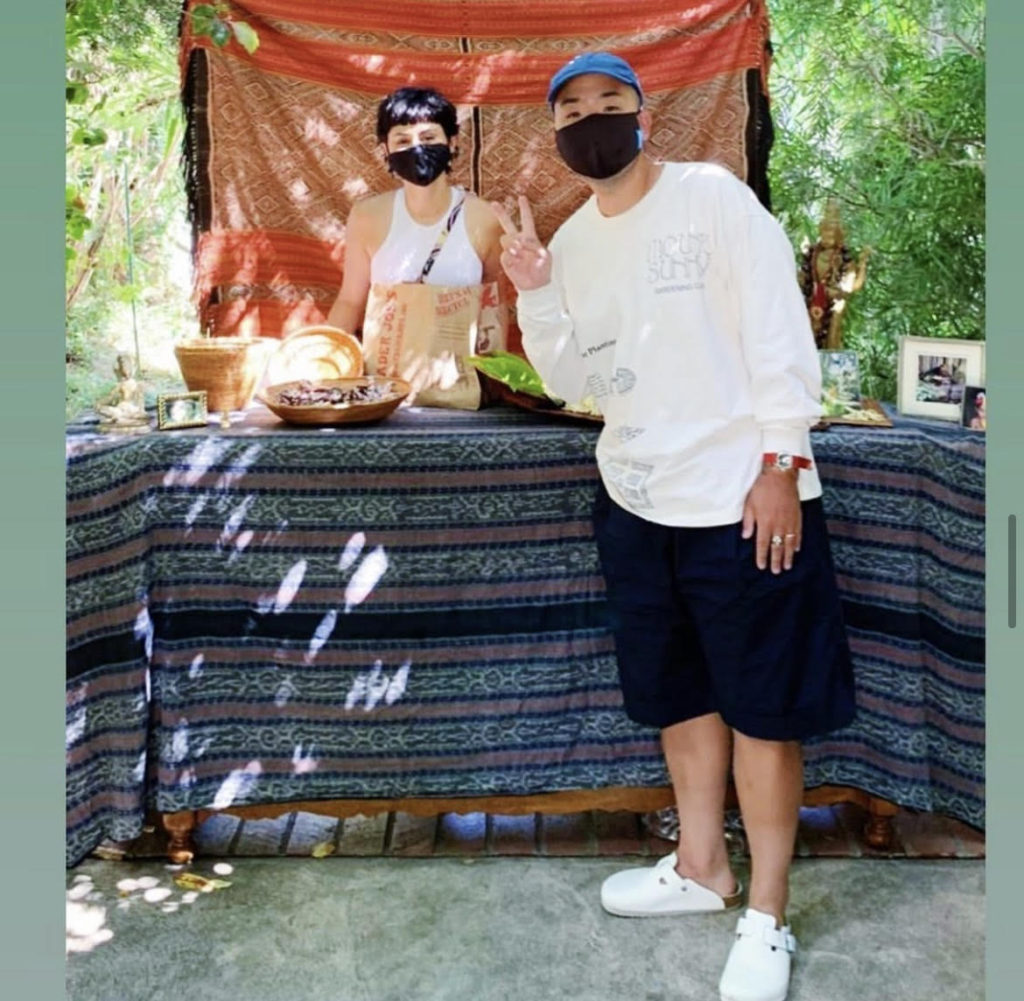
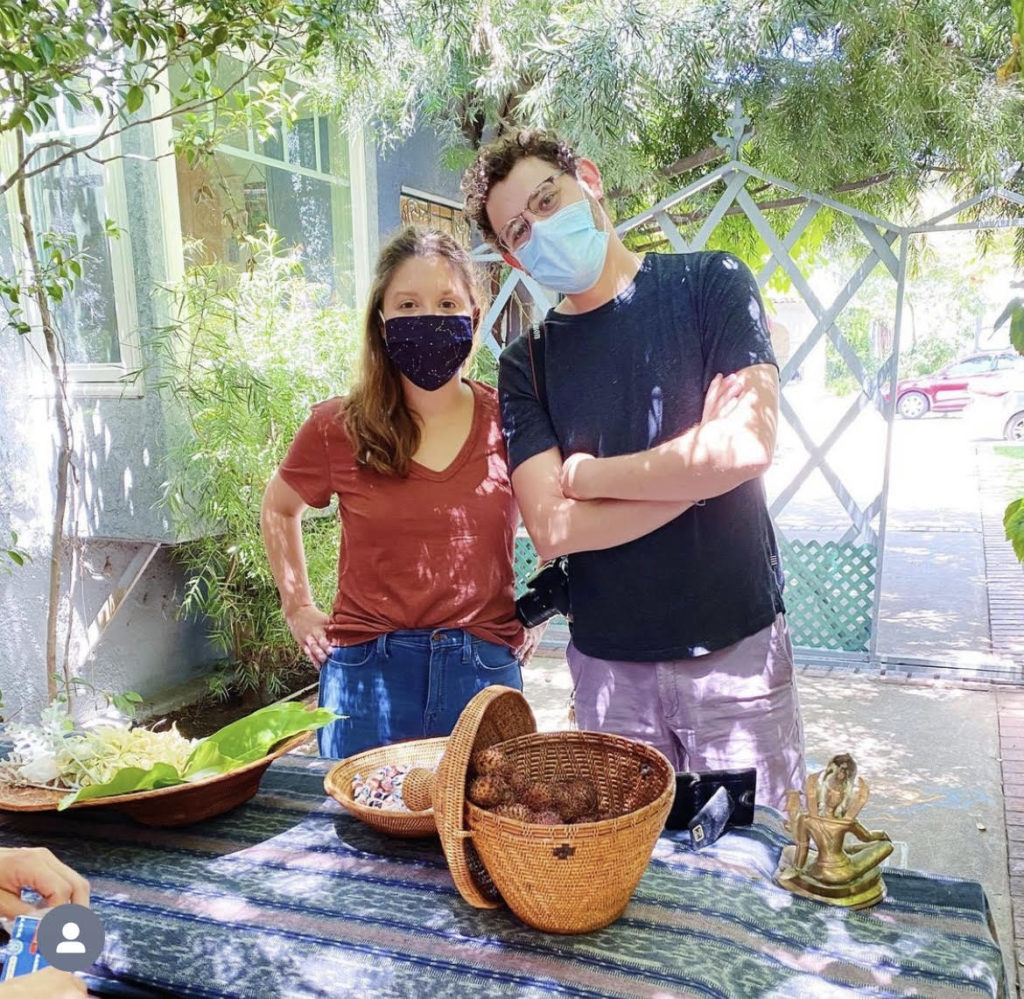
Tara: One of our main goals in opening our space is to create a space for people who can feel that welcoming warmth of Balinese customs, which is to take care of others. We felt that, especially in the beginning because people were so lonely and isolated. It was such a delight to have people bring their kids to get a rainbow, you know? We appreciate the simple things a little bit more. That’s what birthed this whole thing. I still can’t believe it. When I see our write-up in the LA Times… it doesn’t register, honestly. Maybe in 10 years we’ll be like: “Whoa! We were in the LA Times.”
Celene: Because I’m not a trained chef, it has taken some time to not feel like an impostor and to recognize that I know what I’m doing. I’m someone who feels the need to take a class before I do anything, but that’s just not true.
What are some misconceptions you think people have towards Indonesia or Indonesian food?
Celene: I think the most common question we get is: “Is it like Thai food, is it like Indian food?” Our intention here is to point out that Southeast Asia has sooo much to offer in terms of its uniqueness. Even on Bali, there are differences from village to village because one spice paste can be made by someone’s grandma and may be different from another grandma. Yes, they’re the same ingredients, but totally different proportions in terms of the ratios and how much is used in each dish.
Tara: Yeah, it’s really hard to compare Balinese food to anything else. When people ask “what is it like?” You could say it’s like Malaysian food, but it’s really not (laughs). Or you could say it’s like Thai food, but it’s really not. It’s a completely different experience. We’re trying to hone in on the regionality of what we make, because it’s based off of the restaurant that we love (Nasi Ayam Kedewatan), and where we grew up. We’re trying to master the feeling that we have at that restaurant with what we’re doing. You just have to try it, and then you’ll understand.
In general, people don’t know a lot about Indonesia. Some people have never heard of it. Geographically, they don’t know that it’s thousands of islands. Maybe they’ve heard of Borneo, but what do they really know about Borneo? It’s part of the hole that is missing in everybody’s cultural vocabulary, and we’d love for more people to know about it, because it’s really great.
Besides the Smorgasburg food market, where else can people find you?
Celene: When we do events off Smorgasburg, we have a newsletter which you can sign up for on our website. We let people know: “Hey, we’re doing a driveway pop up,” and then occasionally we’ll collab with another restaurant or space. Sometimes we do catering, but it depends on the job because we’re still a pretty small team.
Tara: We want to go back to the Bay area, where we have a few events lined up. We’re trying to be more on the road, but that’s pretty hard.
You can find Tara and Celene at the Smorgasburg food market every Sunday from 10AM-4PM! I suggest going there early because they might sell out of a few menu items. I can’t wait to follow their journey and go to their future brick-and-mortar, a place that will surely recreate the feeling of being in Bali.
Website: BungkusBagusLA.com
Instagram: @BungkusBagusLA
